We headed out today to see the two castles perched on hills above Sion. The Château de Tourbillon sits atop one while the Basilique de Valère sits atop the other. It ended up raining the entire time we were there but we still made it to both!
The morning at the Grand Hotel Suisse Majestic started out dark with overcast skies. We could see the mountains on the other side of the lake though. Some of the snow from two days ago seems to have melted from the rain yesterday.
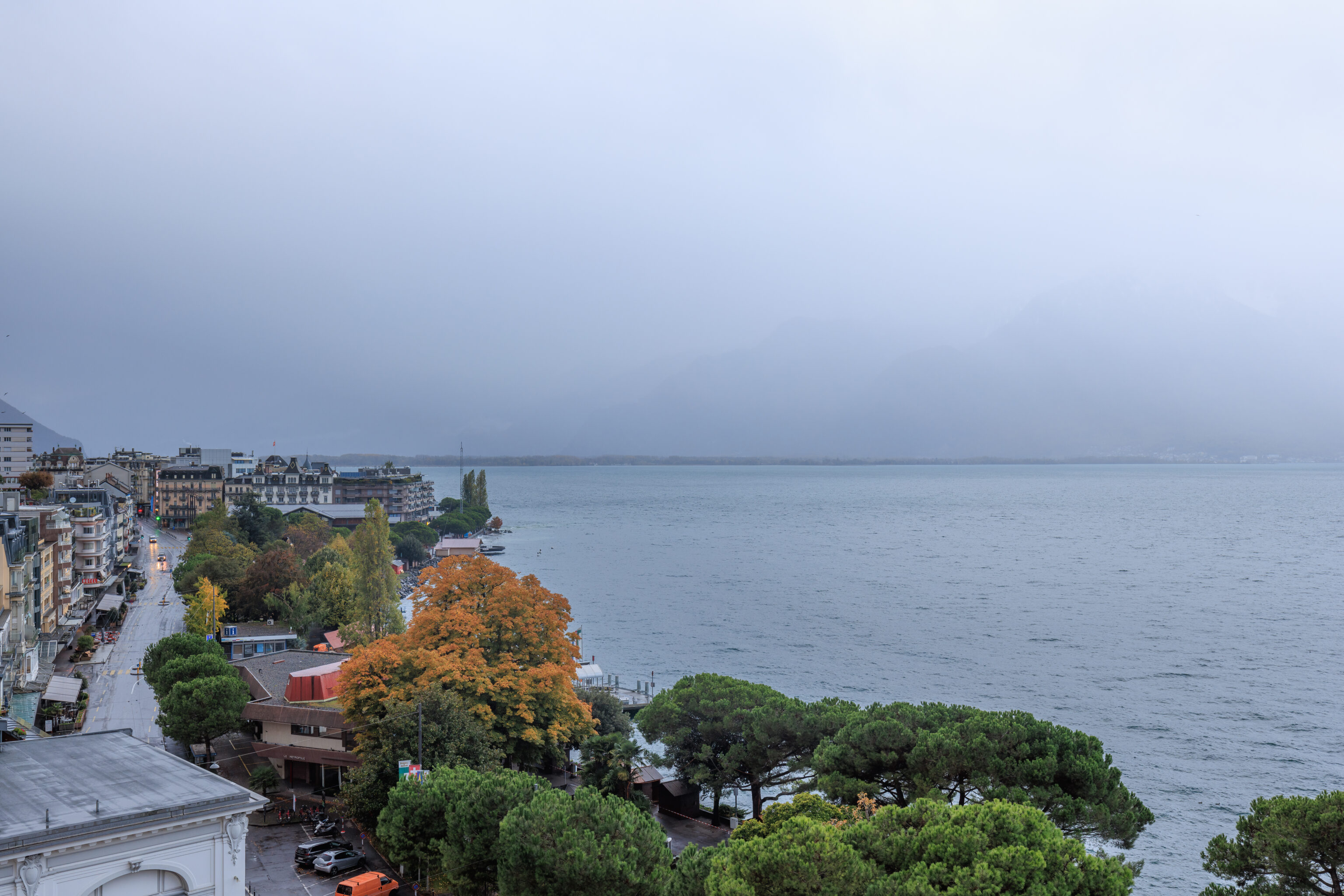
By the time we were ready to go, the weather had gotten worse. The mountains were fading from view. We headed to the train station to catch the next train to Sion, a short 45 minute trip.
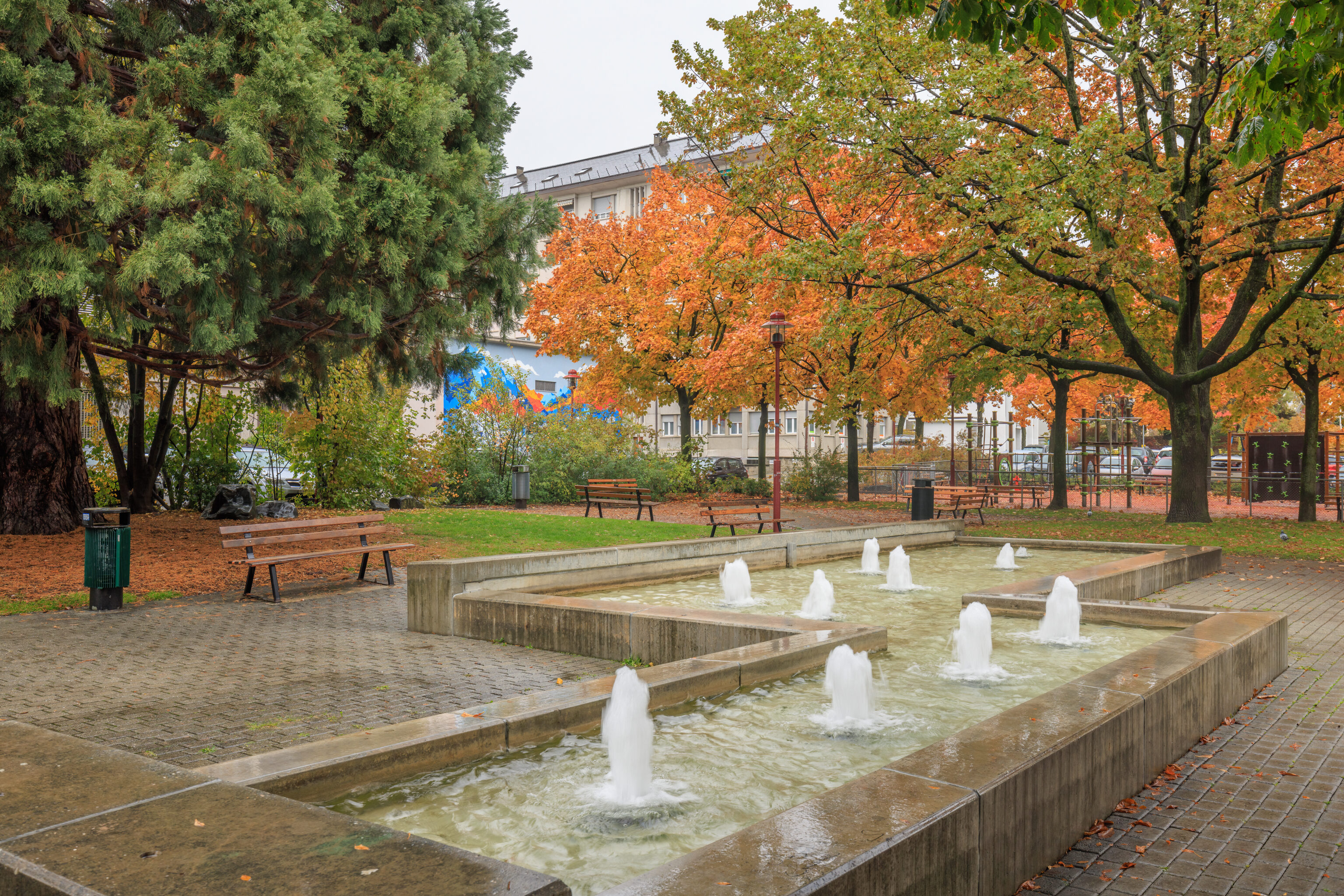
After arriving, we started walking to the north. We passed through this little park with an active fountain and some nice fall colors in the background.

We walked by a nice mural of Sion. Our destination is depicted at the top left!

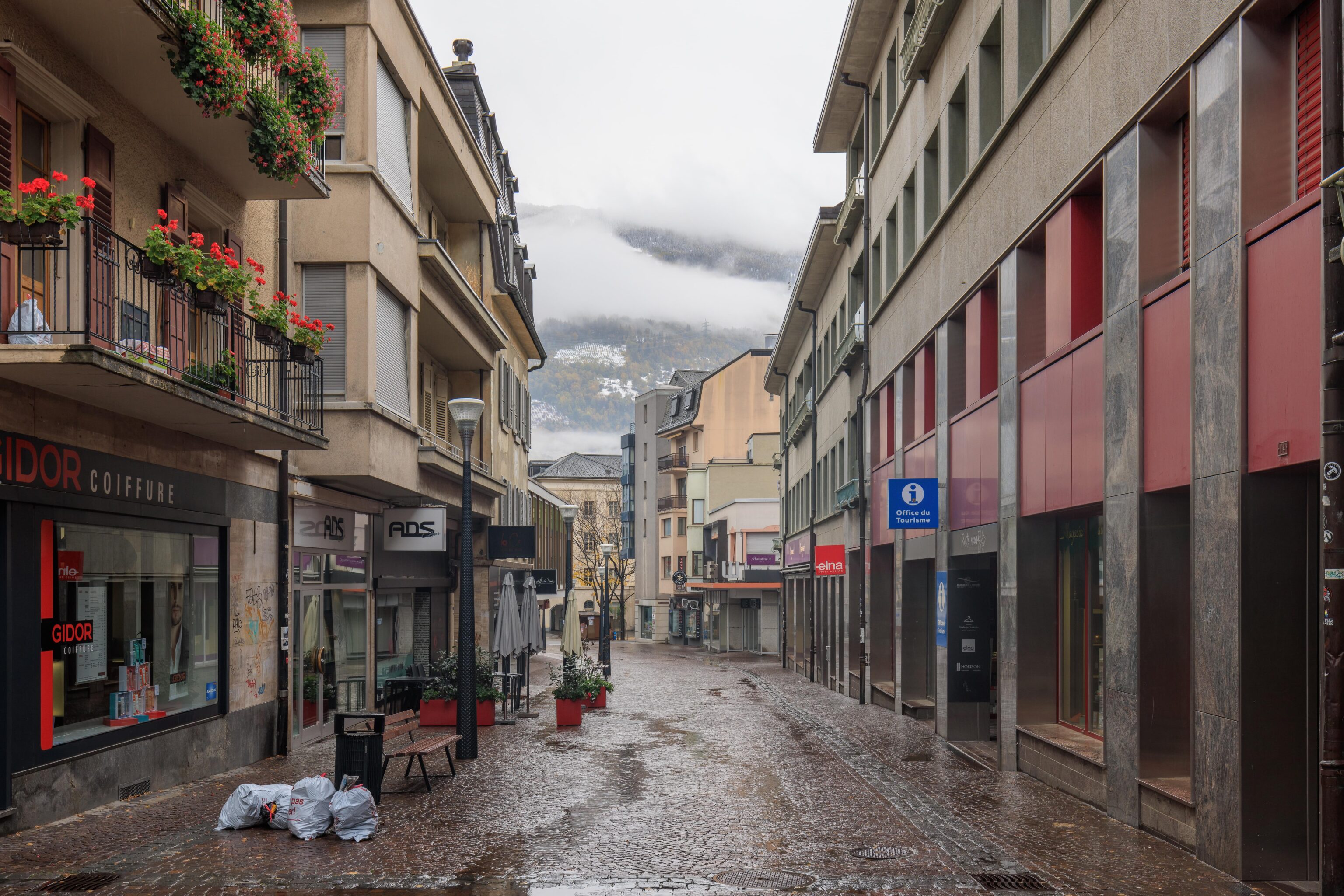


We walked through a pedestrian area lined with shops and restaurants. Everything was closed as it was a Sunday morning. And, the weather wasn’t very good!

This symbol on the ground reminded me of the logo of the Tokyo Metropolitan Government!
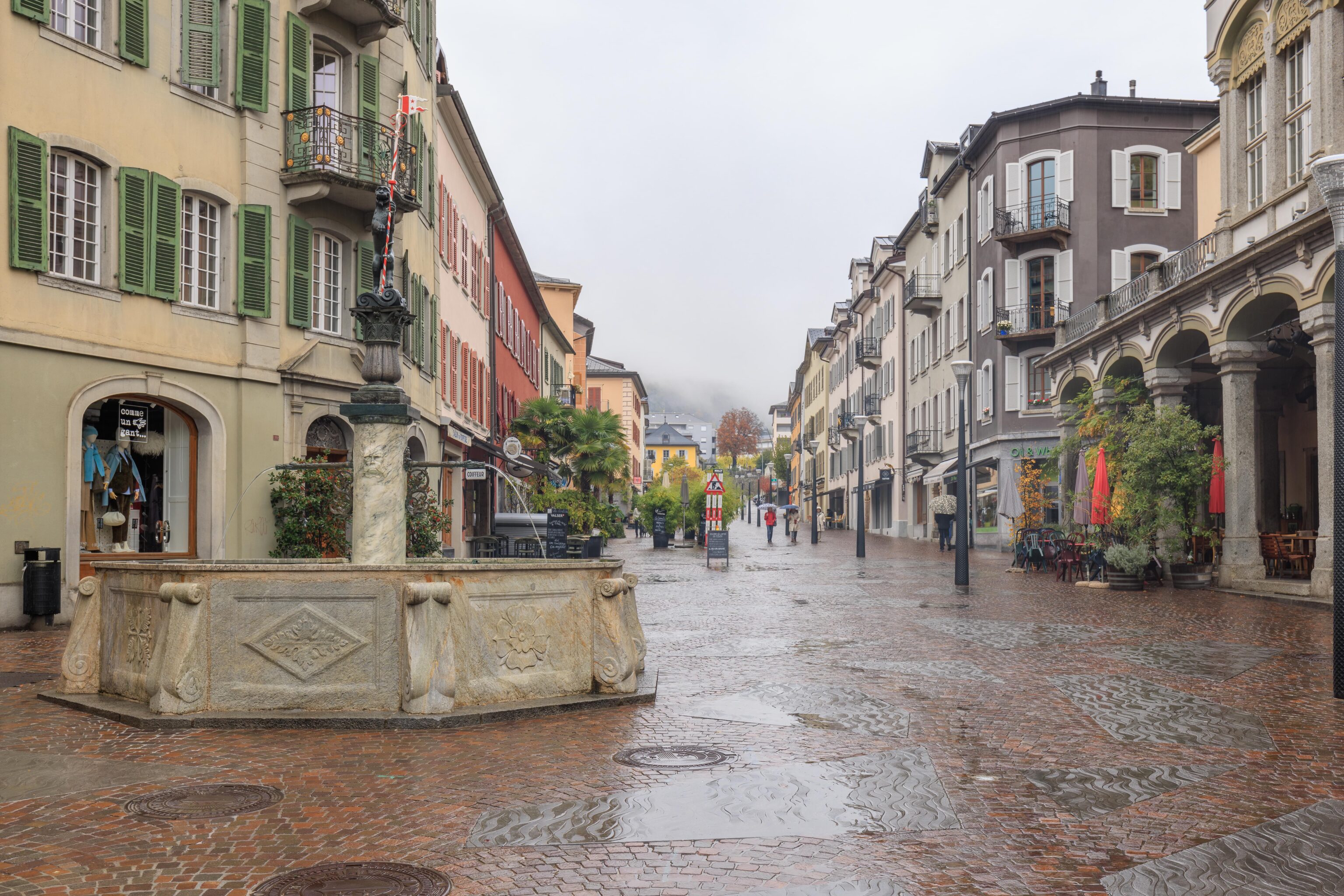
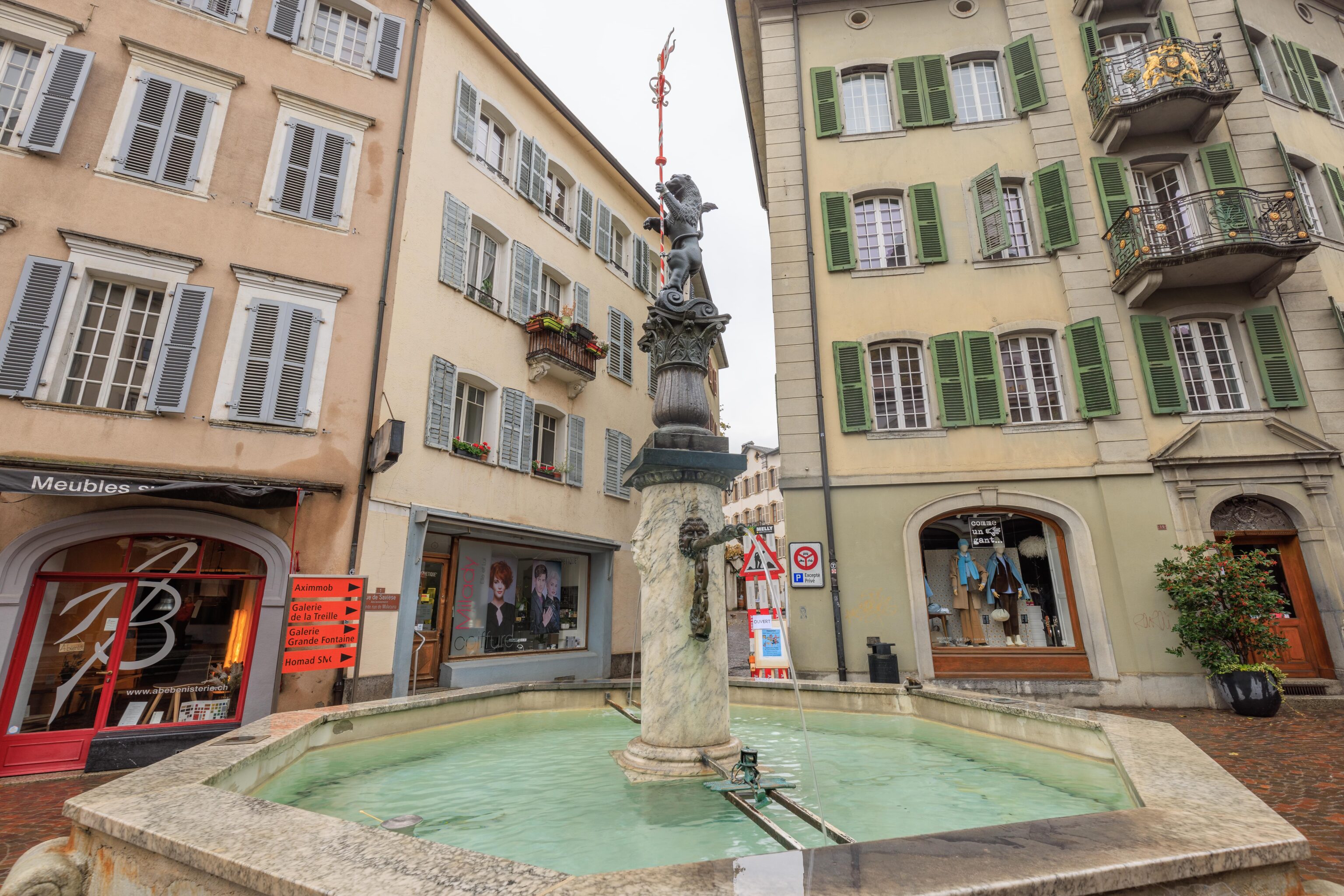
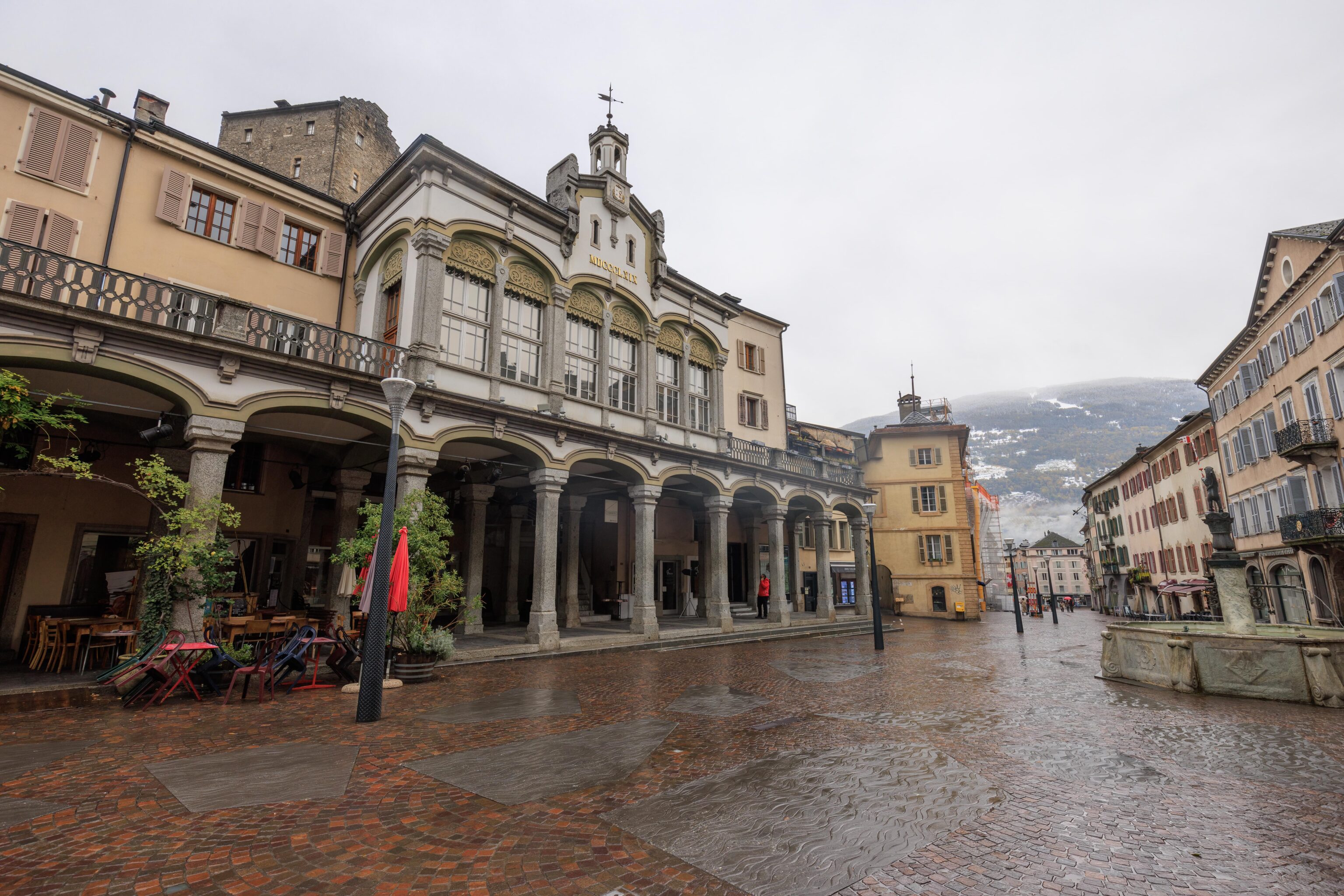
We went about as far as this fountain before eventually realizing that we had walked a block or two too far.

We eventually found the right road, the narrow Rue des Châteaux, basically, Castles Street.

There are some castle structures at this level, slightly higher in elevation than most of Sion. This building is the Musée d’art du Valais. Sion is the largest city and capital of the Canton of Valais1.

We walked by this statue of Saint Theodule (Theodore). He was the first bishop here in this region2.
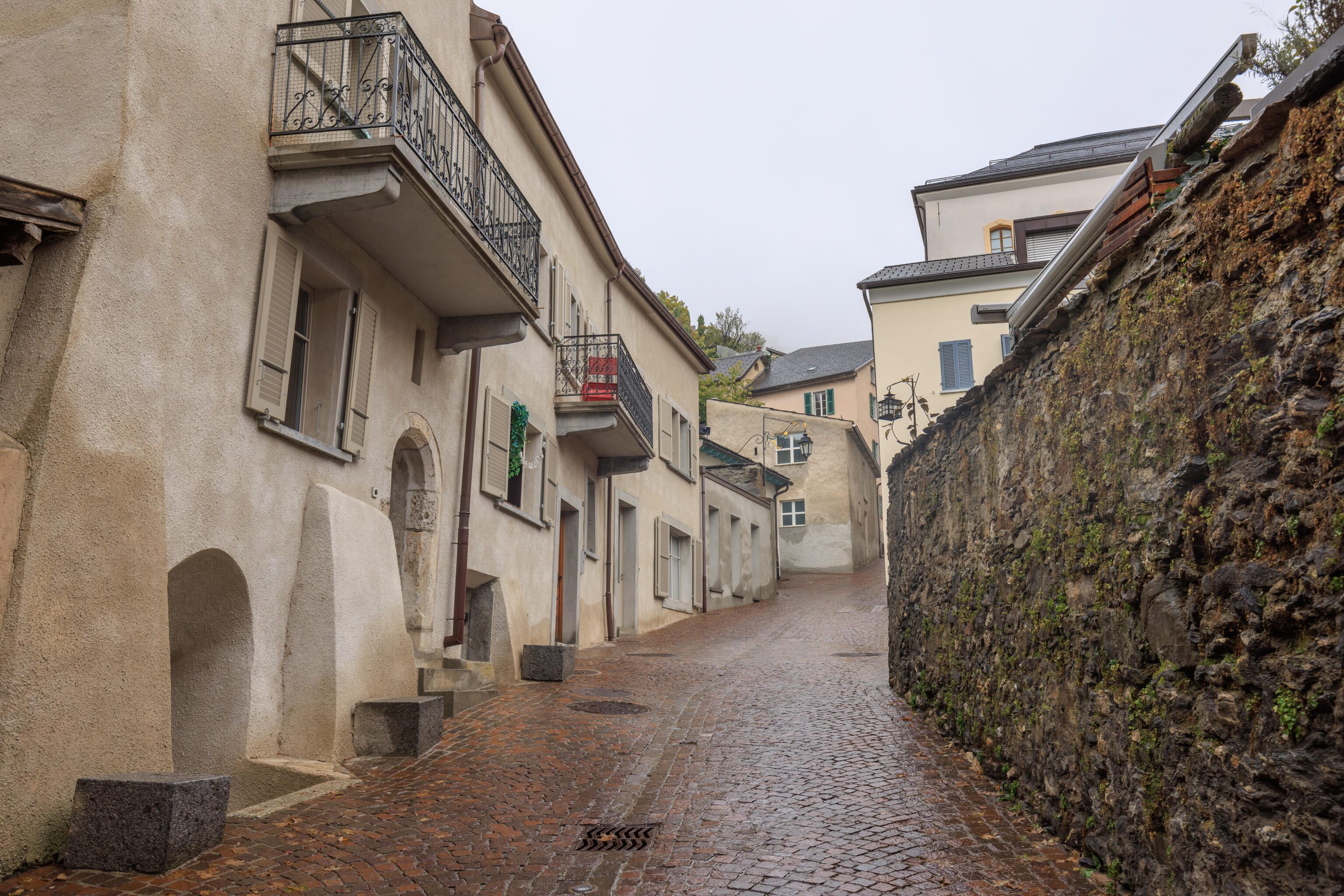
The narrow road climbed somewhat steeply as we continued to walk to the east. Although it was quite wet with rain, the road was not slippery.

We soon reached a flat area which seems to serve as a plaza and parking lot. This was the view looking back down.

The Château de Tourbillon was above and to our left. The Basilique de Valère was above us to our right. The view wasn’t so great from here.
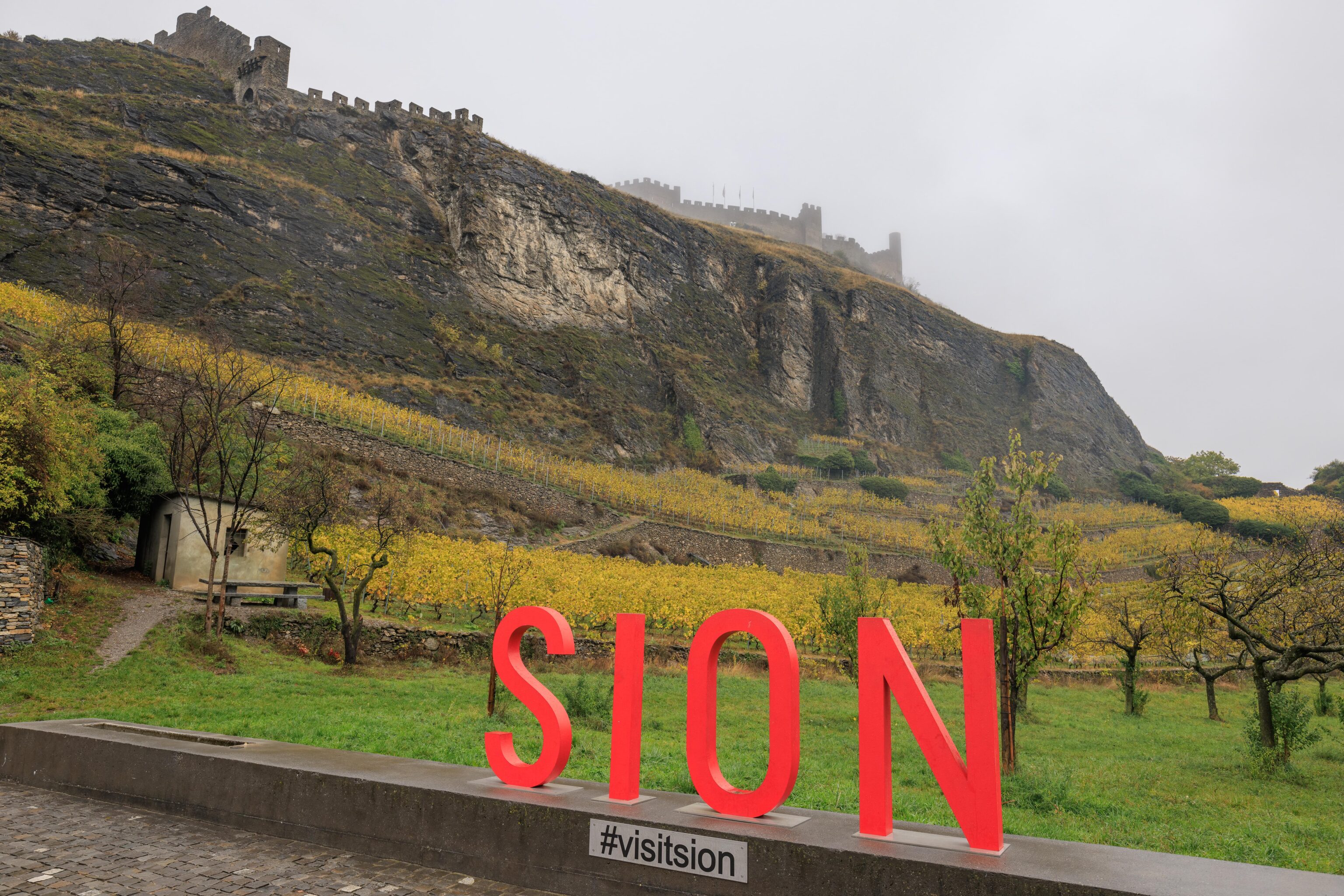
The same view from the red Sion sign. We started to walk up to the Château de Tourbillon via the stairs on the left side of the previous photo.
A sign at the stairs provides some background in English:
It was a little before the year 1300 that Boniface de Challant, bishop of Sion, undertook the construction of the castle of Tourbillon, which was completed by its successors. We particularly owe to the latter the frescos of the chapel, dedicated to St George, dating back to the second quarter of the 14th century and that a recent restoration made visible again. The castle was set to fire and tore down during the wars of Rarogne, in 1417. In the middle of the century, bishop William VI of Rarogne restored it, giving it the appearance it kept until the end of the 18th century and that we know thanks to several engravings. A new fresco embellished. the chapel, which was consecrated a second time in 1447. Tourbillon became the summer residence of the bishop, who usually lived at the castle of «la Marjorie». It was a place hard to get to at a period when its strategic value was declining and therefore it was deserted little by little, particularly during the 18th century. The fire of Sion, which devastated a good third of the town on 25th May 1788, tore off the castle in its burning twists. It was never built again. It was only at the end of the19th century that the value of the castle as a historical monument was taken into consideration and the first works of consolidation were set in motion to stop the ruin of the whole construction. To mark the millennium of the donation of the County of Valais to the bishop of Sion in 999,, the Lord Bishop Norbert Brunner gave the castle of Tourbillon to a foundation - a partnership between the state of Valais, the diocese, the town and the Bourgeoisie of Sion - which is in charge of the good management of the area.
The English here is a bit awkward in places but understandable. For whatever reason, there is a second column of text that covers some of the same content but adds a bit more:
This site with its magnificent view was already inhabited in prehistoric times. Bishop Boniface de Challant built a castle here around the year 1300. The castle was burnt down during the wars of Rarogne in 1417 and rebuilt by Bishop William VI. It was again rampaged by flames during the Great Fire of Sion in 1788. Restoration began in 1960. Inside the castle, in the great residential tower, the remains of the keep, the visitor can still see traces of what was once the bishop's apartments. In the vaulted choir of the chapel, wall paintings (14th and 15th century) are important evidence of the medieval period in the Alpine regions. The southern surrounding tower houses one of the rare medieval dovecots known in the region.

The view looking back towards Sion as we started on our way up.
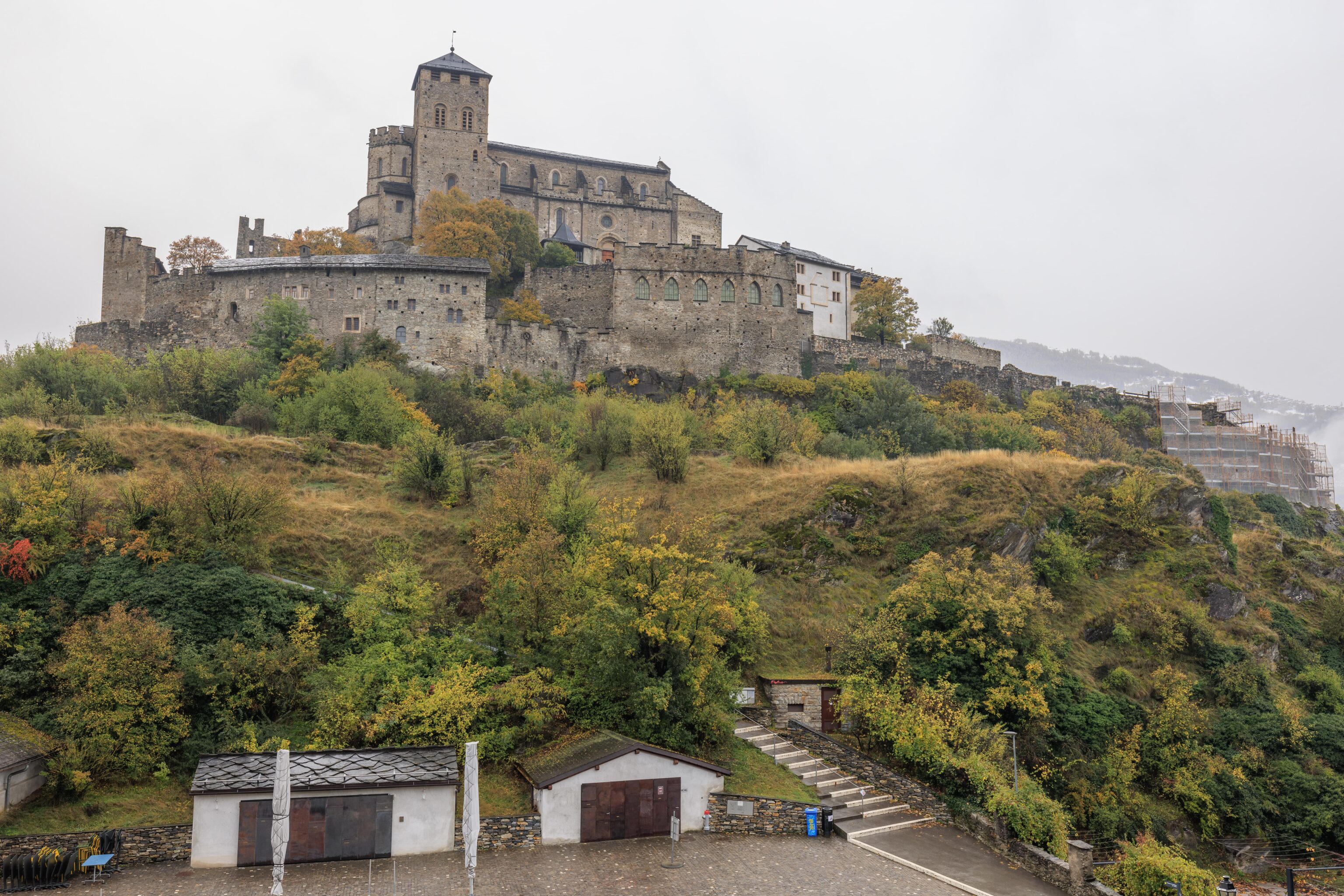
The view of the Basilique de Valère, directly to the south, is much better from this slightly higher vantage point compared to down below where we were.

The next part of the path up had stairs.
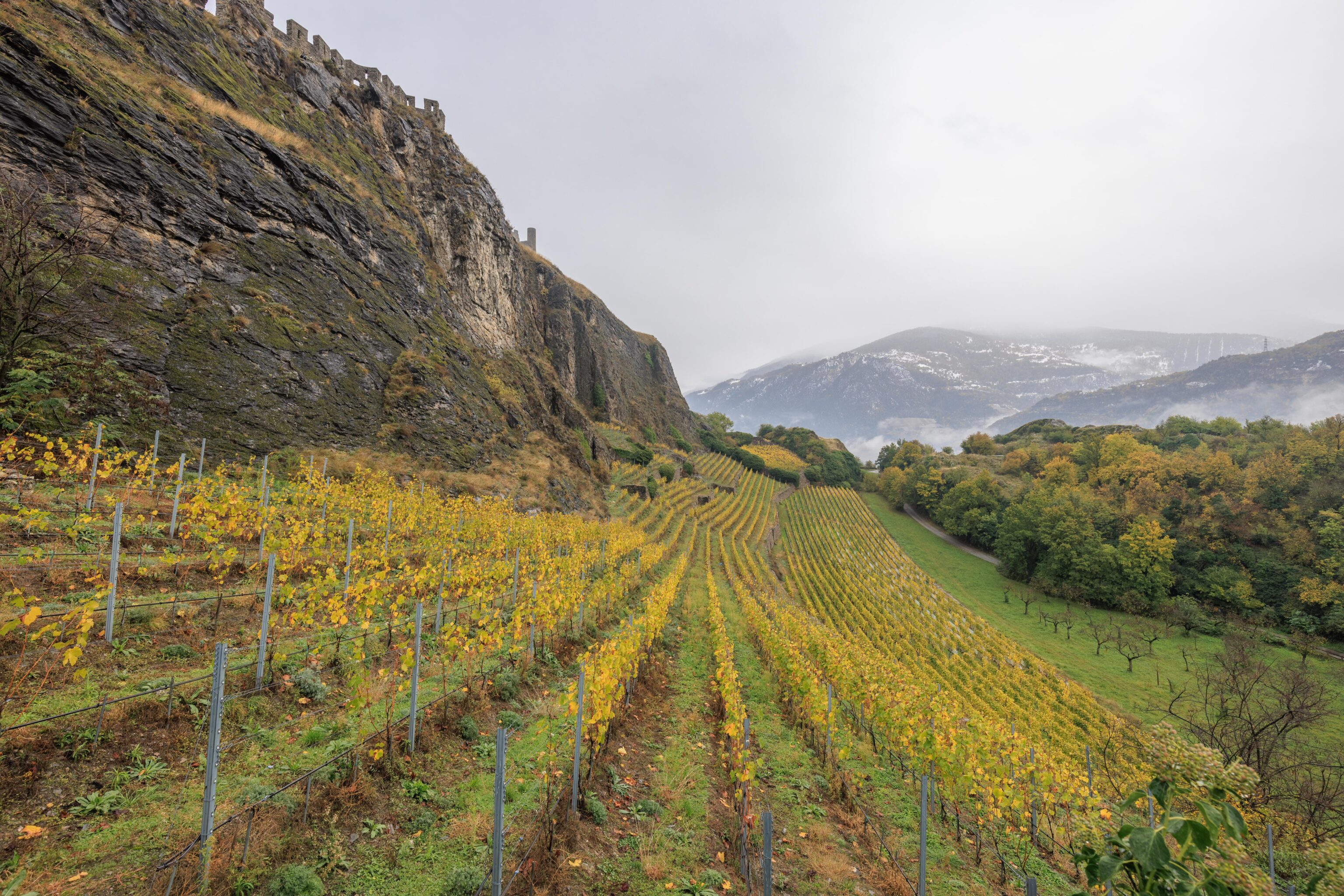
The lower slopes were lined with vineyards.

Looking to the south at another bend in the path. The Basilique de Valère looks pretty impressive, occupying the entire top of the hill that it is built upon.

The view from the next bend in the path.


There is a small tiny field here. Looking more or less to the southwest, we could see the city’s small airport in the distance.
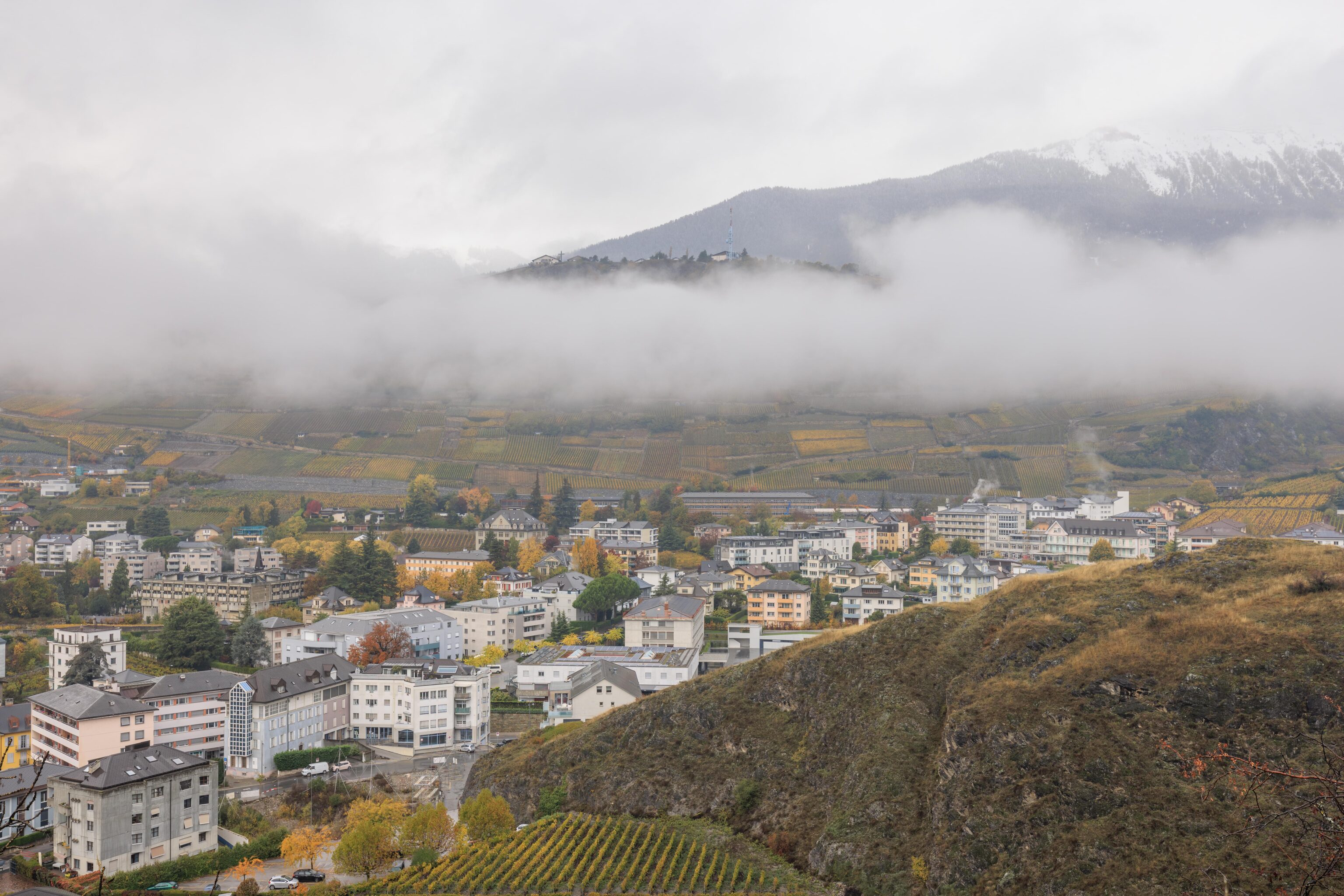
Looking to the northwest, we could see the top of a hill poking out from a low layer of clouds. All the sloped land on the hill seems to be occupied by vineyards.

Looking to the east, we can see the next section of the trail up. More stairs followed by what seems to be a very straight section compared to the zig zagging route we have been following.
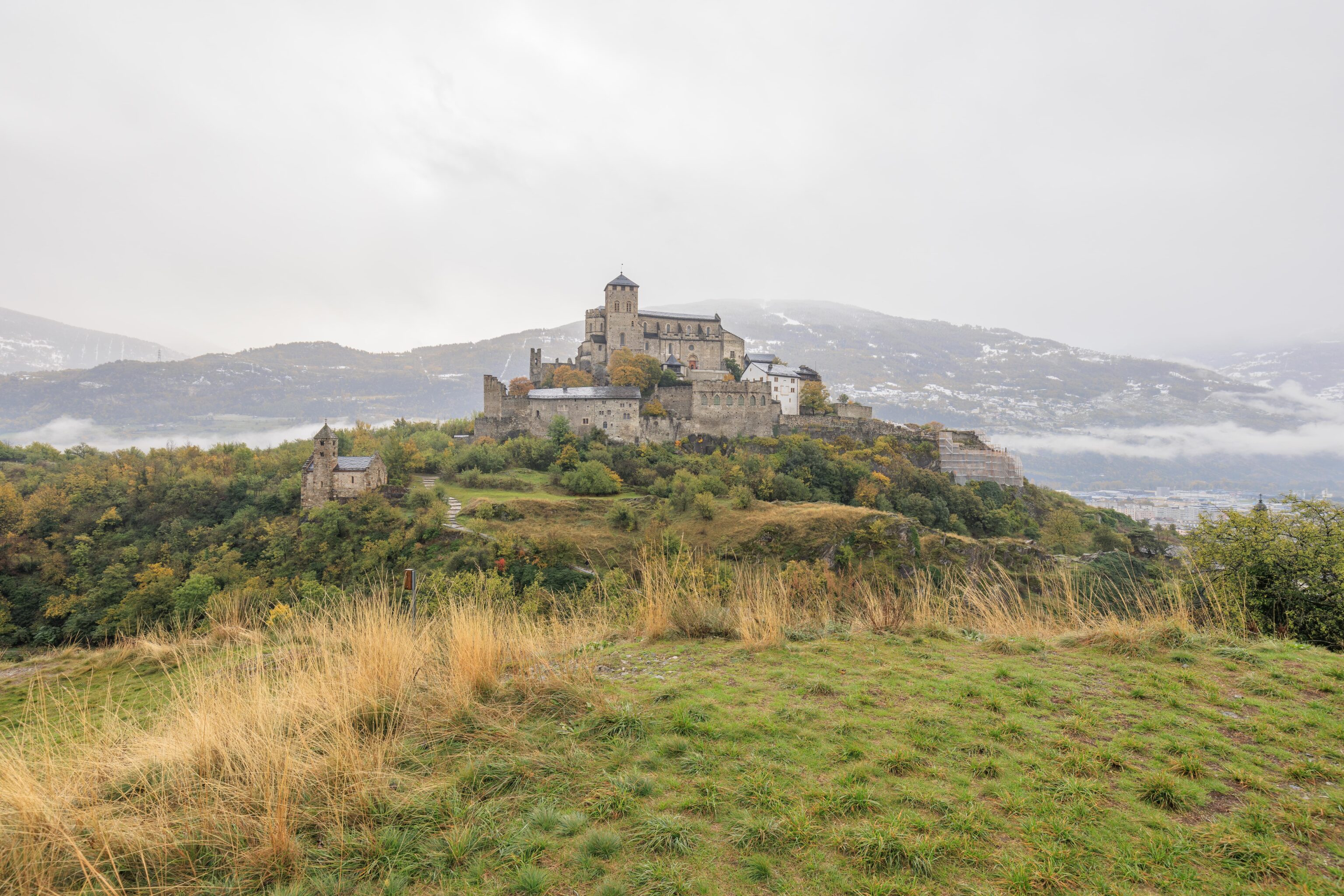
The Basilique de Valère to the south from the edge of the little field.

This next straight section was rather steep with uneven rocky stairs and a steep drop off on the right. The metal railing on the left was useful though it was mounted very low for a person of normal height. And it wasn’t entirely stable.
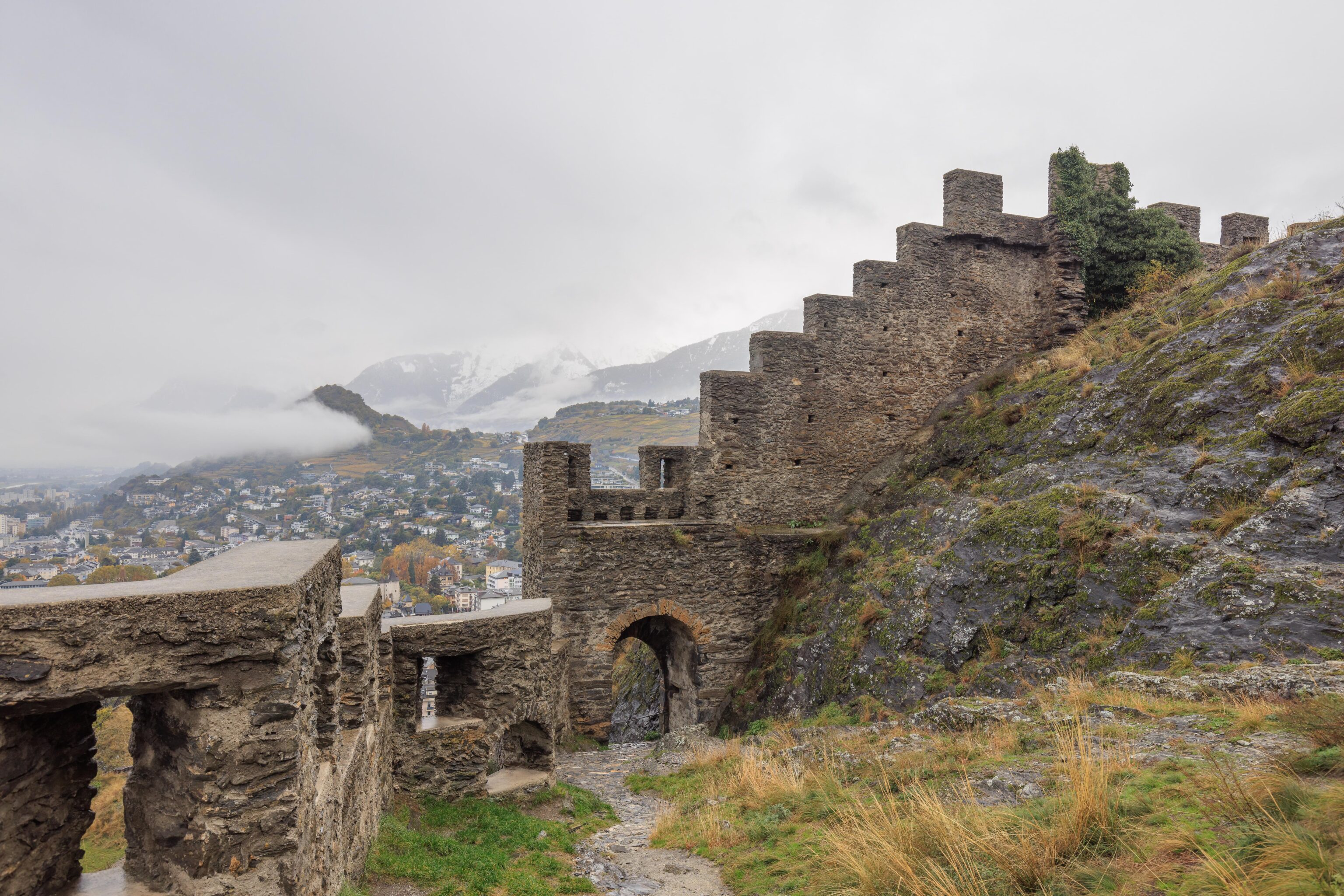
We soon reached this wall and passed through the gate. This is the view from the far side looking down. The wall only protects what can be probably best described as a ridge. Both sides to the left and right slope steeply downwards.

We seem to be more or less level with the Basilique de Valère from this vantage point by the wall.

Before passing through the wall, it seemed like were almost there. Nope! The path immediately beyond the wall has two options. The left path seemed steeper while the one on the right seemed a bit rougher. We went to the right. It seemed a bit sketchy where the paths joined but traction was happily very good despite all the rain.

The Basilique de Valère after we’ve gained a bit of elevation. The camera has a level sensor so we can tell if things are above or below us by seeing where they appear in the frame as we know if the camera is pointed straight ahead.

Soon, it started to get cloudy. This was the view to the west, the direction that we came from. The Basilique de Valère is left of center, mostly obscured by the clouds.

Soon, we made it to the castle’s inner wall! We should have taken a photo of the open door but did not.

The view from just inside the door. The castle is in mostly ruined state as it was destroyed by fire in 17883. There are a few indoor areas that can be visited by guided tour. We missed it by 15 minutes though.
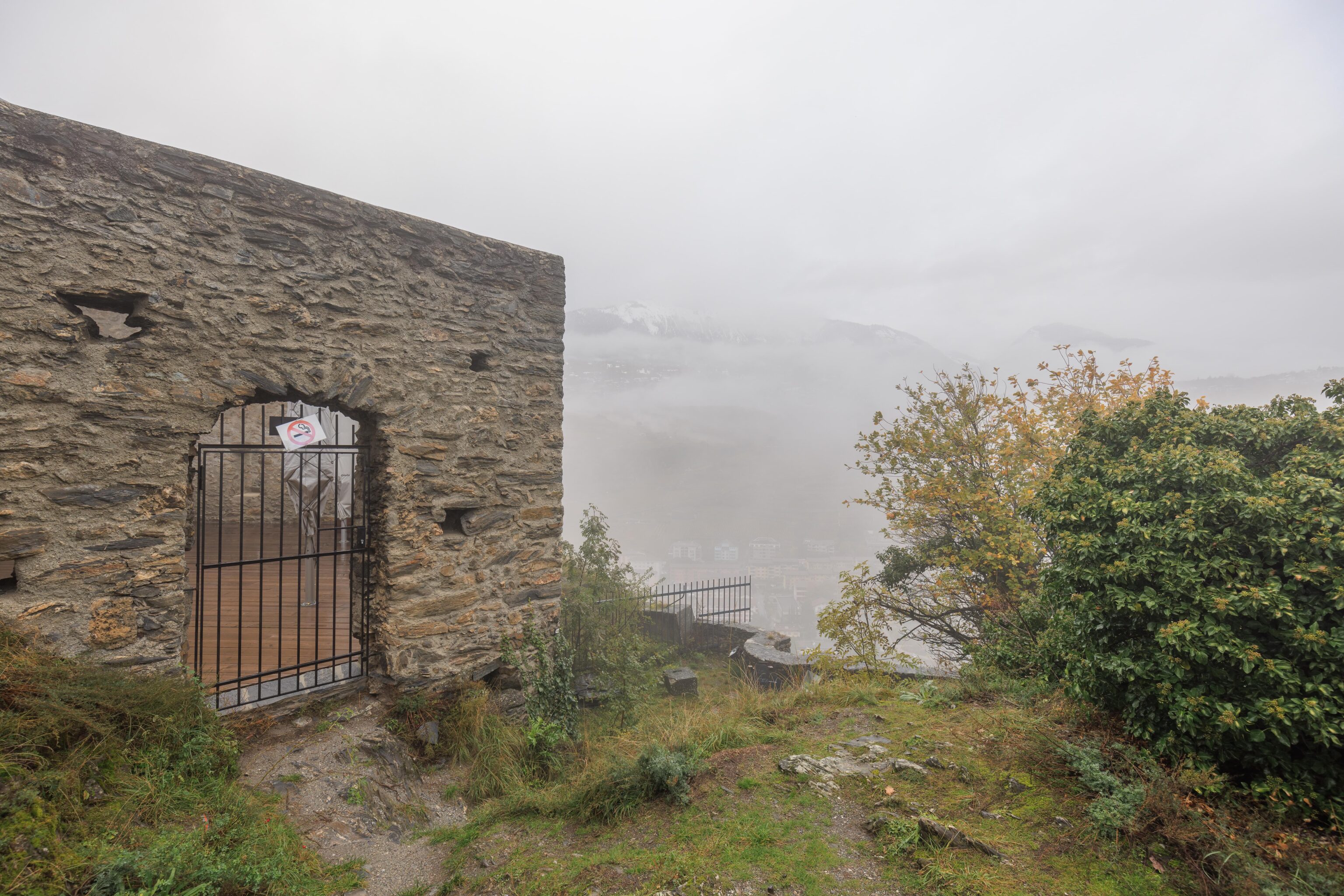
We headed to the left, or west, first, away from the main buildings of the castle. This little room on the left seems to be some sort of patio, perhaps it is open in the summer?

There is a well to the north.

There wasn’t much in this western corner of the castle so we headed in the opposite direction, to the east. The small door into the remains of the keep was at the end of a short path that was surrounded by foliage. We noticed cacti on the right! That was a surprise!

We stepped into the remains of the keep. There is no roof left here, or wall to the north.
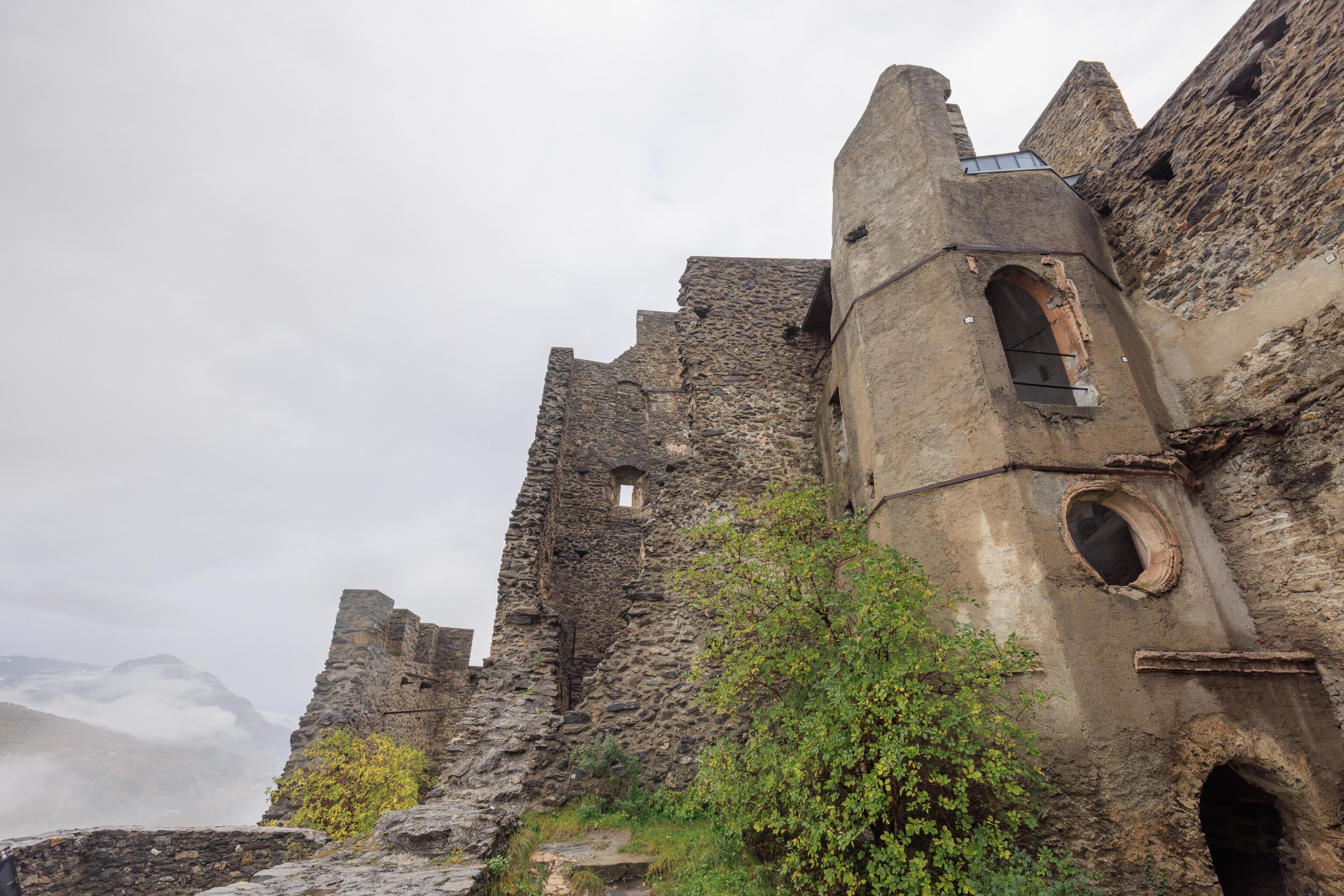
There seems to have been a tower on the west edge of the keep.
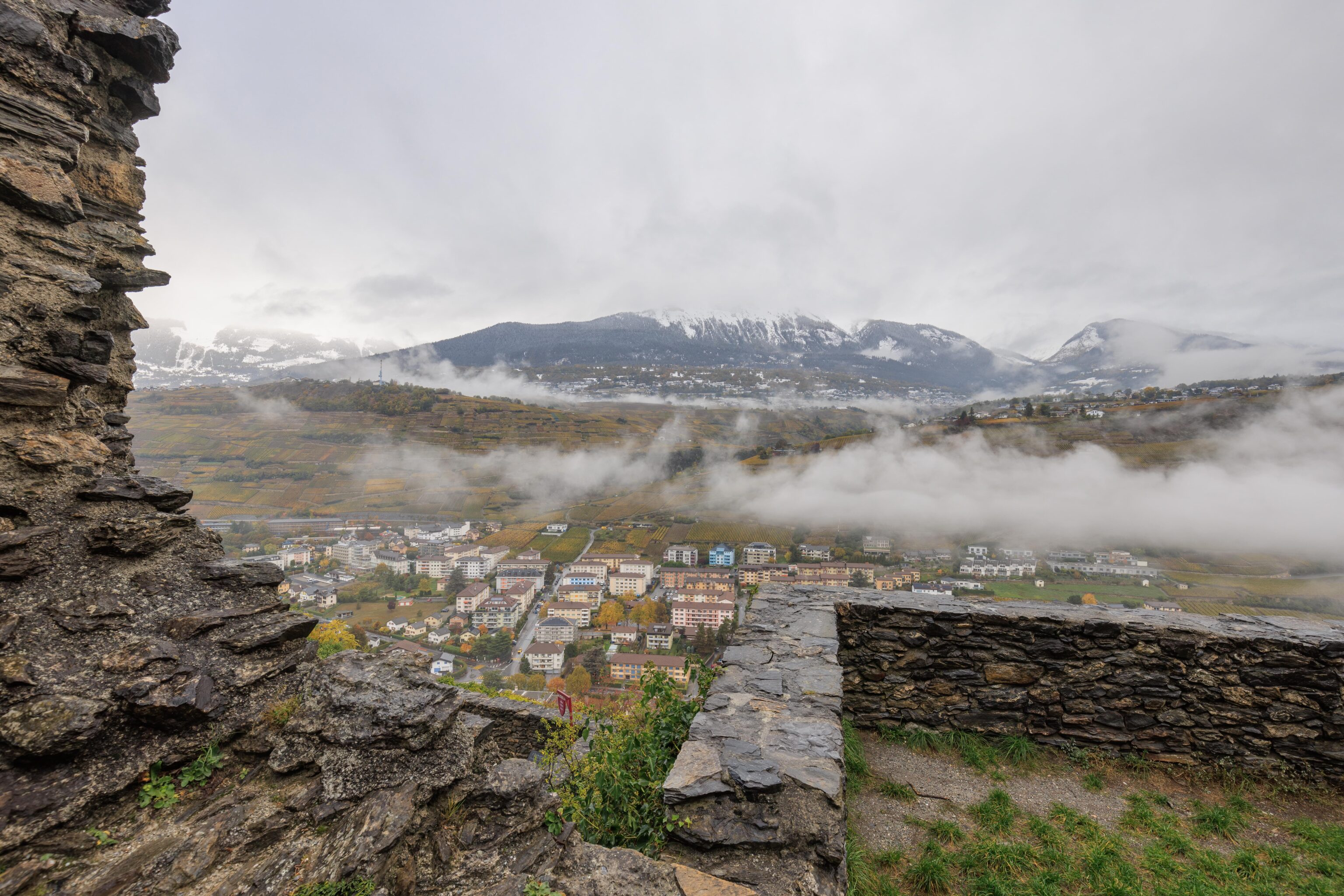
The view to the north. There are only a few buildings here in the city below. Everything else is vineyards.

Looking to the northeast, we can see part of the castle as well as a river. This is the Rhône, the river that both feeds and drains Lake Geneva.
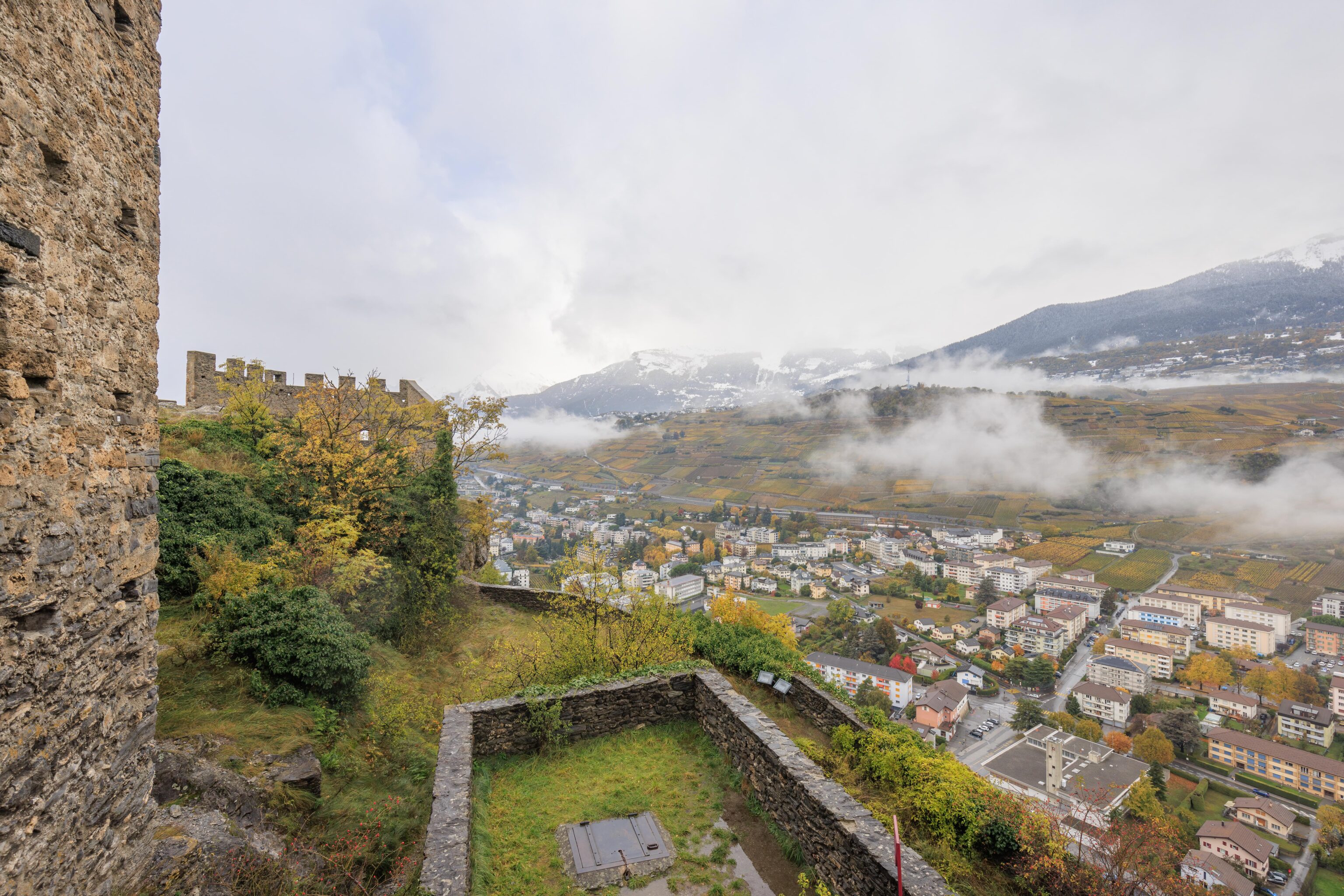
The well that we saw before was now below us to the west.

Looking back at the tower remnants.
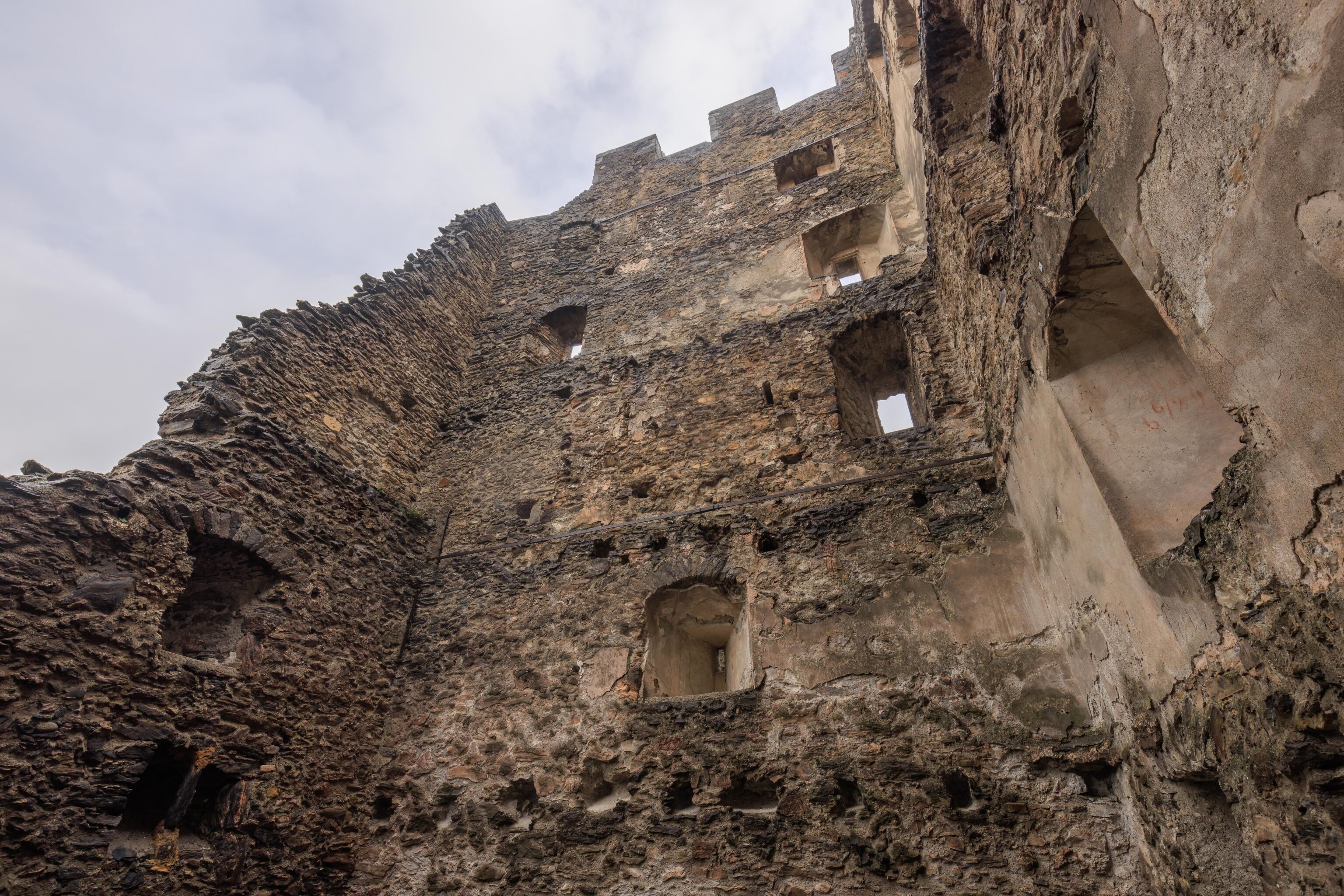
It is possible to go down into what was probably the ground floor of the tower. But there isn’t really much down there. There was some sort of audio art installation that we didn’t really get. A sign with English attempted to explain:
BARBEZAT-VILLETARD DUO D'ARTISTES CAMILLE BARBEZAT, NÉE EN 1987 MATHIEU VILLETARD, NE EN 1981 VIVENT À NEUCHÂTEL WHITE WITH NOISE, 2022 Sound installation created in collaboration with Yannick Barman and Maxime Gianinetti as part of a Kunst am Bau project for the patio ALPOLE - Pôle de recherche sur l'environnement alpin et polaire, Sion. Alpole, a research center for the alpine and polar environment, was recently inaugurated in Sion, as part of EPFL's extension into the Valais region. In its patio, nine loudspeakers, for as many peaks scattered all over Switzerland, and which have the particularity of housing a meteorological station close to glaciers. The Barbezat-Villetard duet lends its voice to these sentinels of climate change, the nine voices together forming a choir. As the days and seasons go by, the colors and textures of the sounds change. Temperature, humidity, atmospheric pressure, wind... influence and transform these summits up there, and generate data collected and interpreted for the different voices down here. The nine-voice choir adapts the tempo according to the number of visitors to the site.
The description is a bit confusing as to exactly what this installation does.
We exited the keep and continued to the west where there is a gate through the castle’s inner wall. There is a small room next to it which contains a bathroom and what seems like the castle guide’s office.

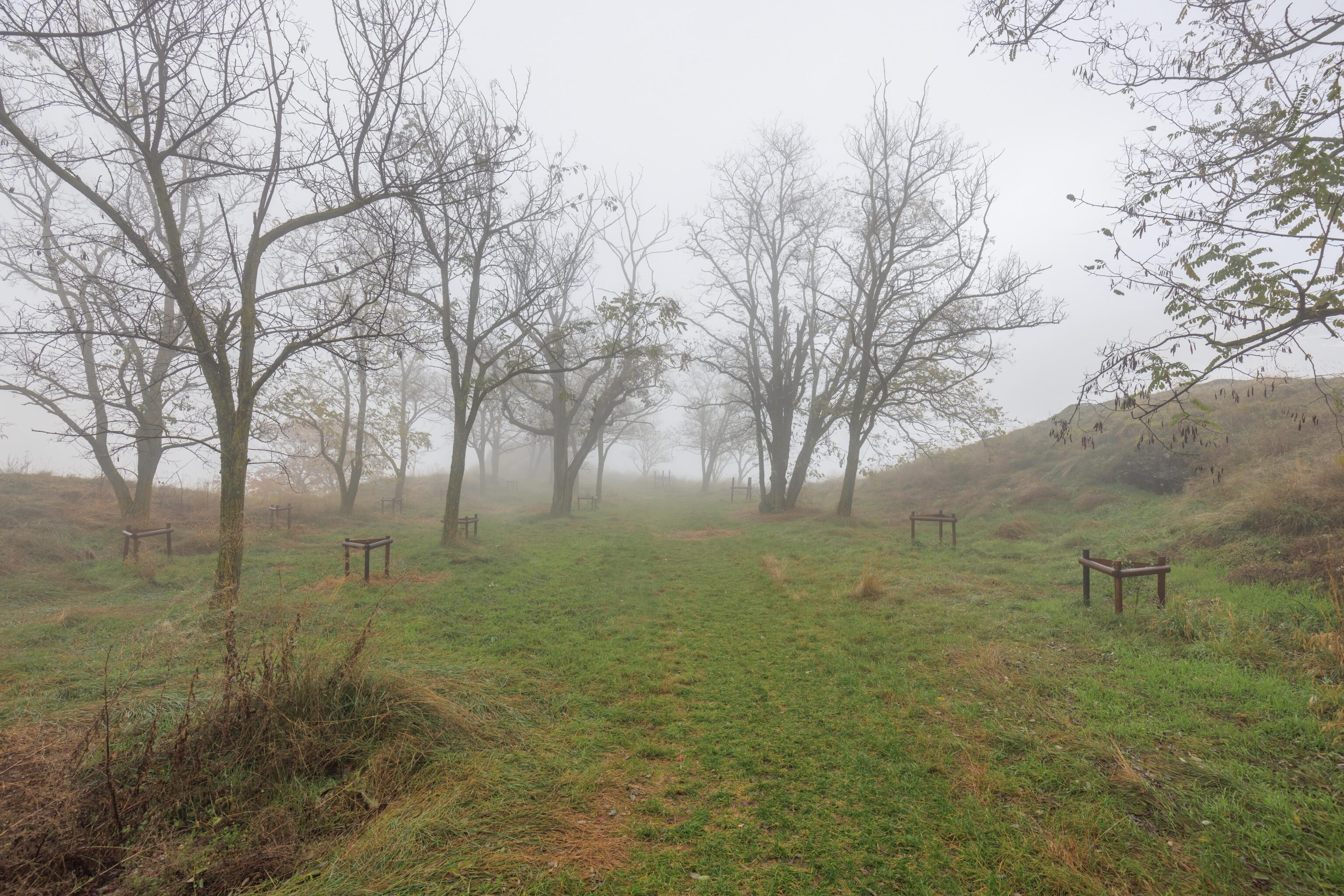
After going through the gate, we found ourselves looking at a grassy field lined with trees. It was a bit spooky with the low clouds. And very quiet as there were only a few visitors here. It wouldn’t have been surprising if a zombie or undead showed up!

We reached what can probably be best described as a rocky outcropping. Looking to the east, we could see that the path continued below us a bit. The Rhône was visible further down below.
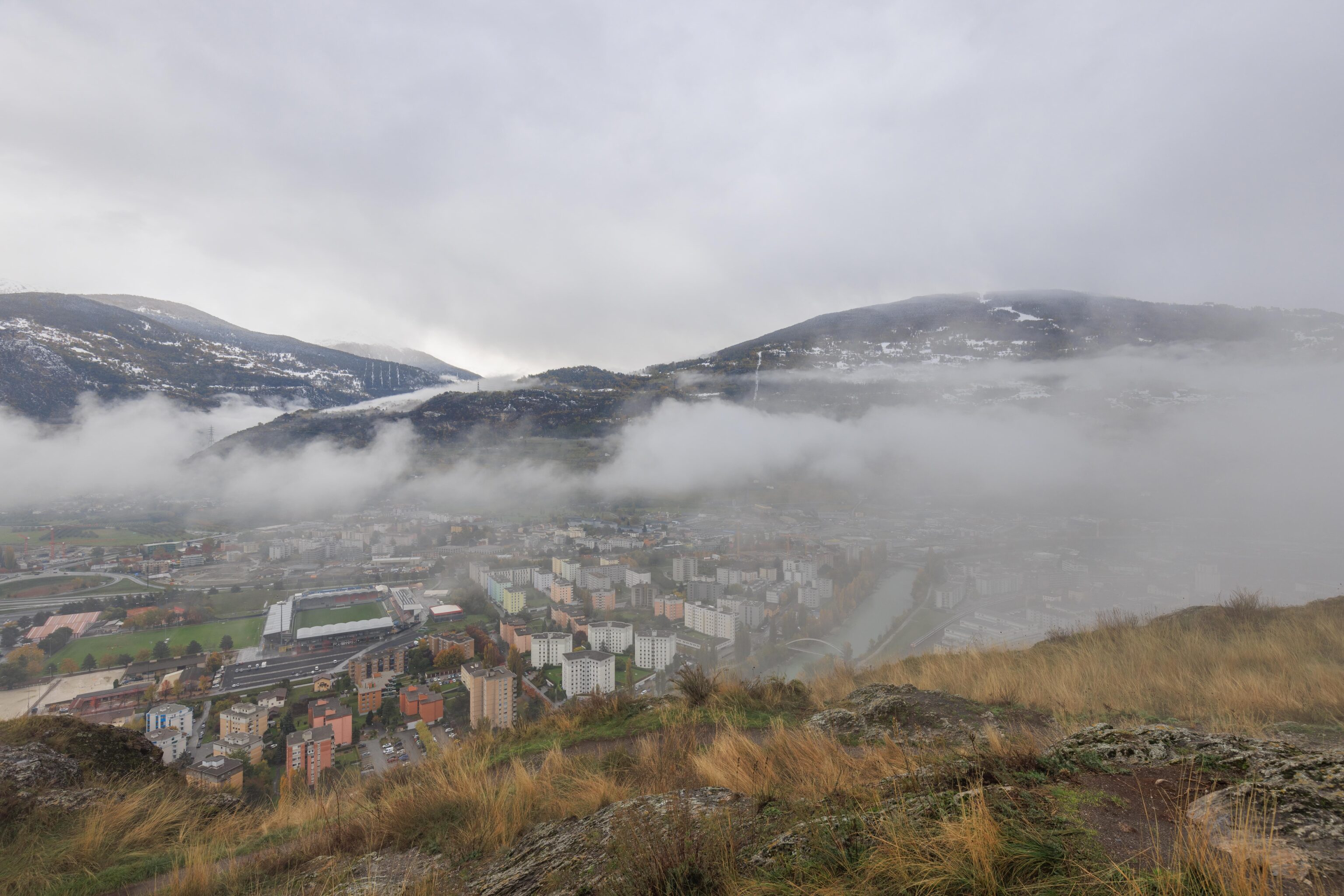
Looking to the south, we could see the Rhône below as it flows past.

Looking back to the west, we could see the remains of the castle peeking out from among the clouds.

We left our perch to continue on to the east along the path that we saw from above. From this vantage point, we could see some nice fall foliage below us in a small vineyard! The Rhône had a beautiful alpine color from this perspective.

Looking to the southwest, we could see the Basilique de Valère. It is definitely below us in elevation! The train station that we arrived at earlier in the morning is roughly in the center of the frame but not really identifiable. This was as far as we went, to the very eastern edge of the hilltop. From here, we walked back to the castle.

There is a better view of the Basilique de Valère from just outside the castle’s inner wall.

We backtracked through the castle to the front door. While we didn’t take a photo on our way in, we took one on our way out. The Basilique de Valère was nicely framed by the door! Was this a coincidence or by design?

A panorama of the view from the door.

Time to head down in the rain. Luckily, nothing was slippery as we hiked down on the wet rocks.

A look back at the castle as we were walking away.
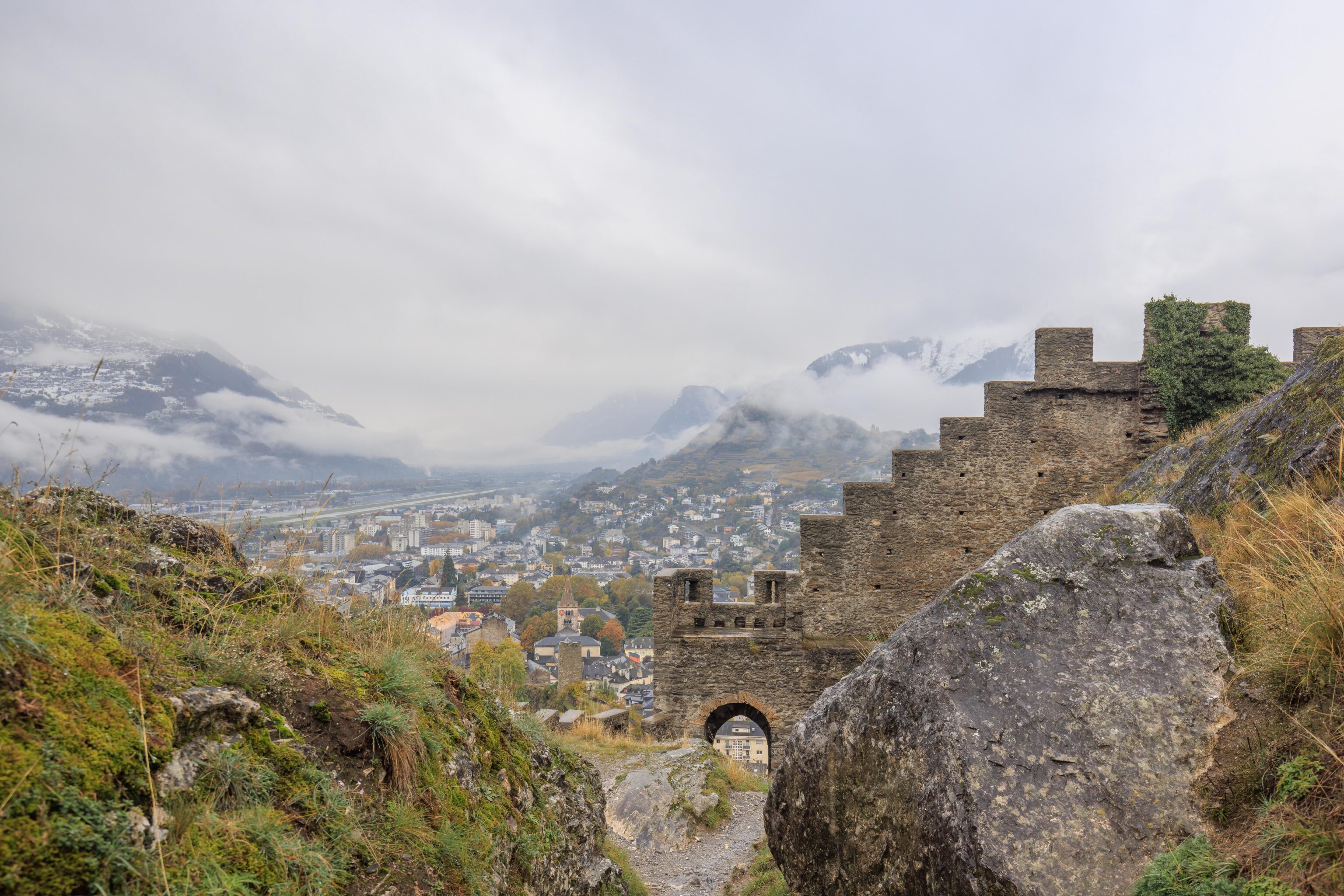

Soon, we reached the outer wall.

It didn’t take long to go down. After returning to the small plaza, we continued on the opposite side to head to the Basilique de Valère.
A sign provided a description of the site:
Valère Site Built in stages from the 11th Century onwards, the church of Valère and the surrounding chapter houses are listed as monuments of national heritage. The history museum in Valais, which opened as far back as, 1883 is now located in the old canonical houses of the Chapter of the cathedral of Sion, the chapter having been moved into town. The church, which became a basilica in 1987, is home to some absolute treasures, including the world's oldest working organ which dates from 1430-1440. The museum, which was completely refurbished in 2008, tells the story of man in Valais, from the first traces to the present day. The rare, sometimes unique objects on display suffice to make the institution well worth a visit.
The right half of the sign has some detail about the castle building that makes up the Basilique de Valère:
Valère Castle Valère hill was ceded by the bishop to his canons (cathedral chapter) in 1049 and became their residence. Some of the buildings were restored and converted into a museum at the end of the 19th century (currently the Valais History Museum). Substantial remains of the fortified enclosure have been preserved. Commenced at the turn of the 11th to the 12th century, the principal church fortress of Switzerland was completed in the course of the 13th century. The semi-circular apse and the richly decorated capitals are preserved from Romanesque times. The choir has been reconstructed in the 13th century in Gothic style. From the same period, a rood screen, a rare example still in place in Europe, separates the choir from the nave. The architecture, wall paintings, lavish furnishings (panel of the Magi, approx. 1440) and the choir stalls are equally note-worthy. The Gothic organ (approx. 1435), considered to be one of the world's oldest playable organs, is the major attraction of the old collegiate church and cathedral of Valère. The church was elevated to the rank of Minor Basilica by Pope Jean Paul II (1987).
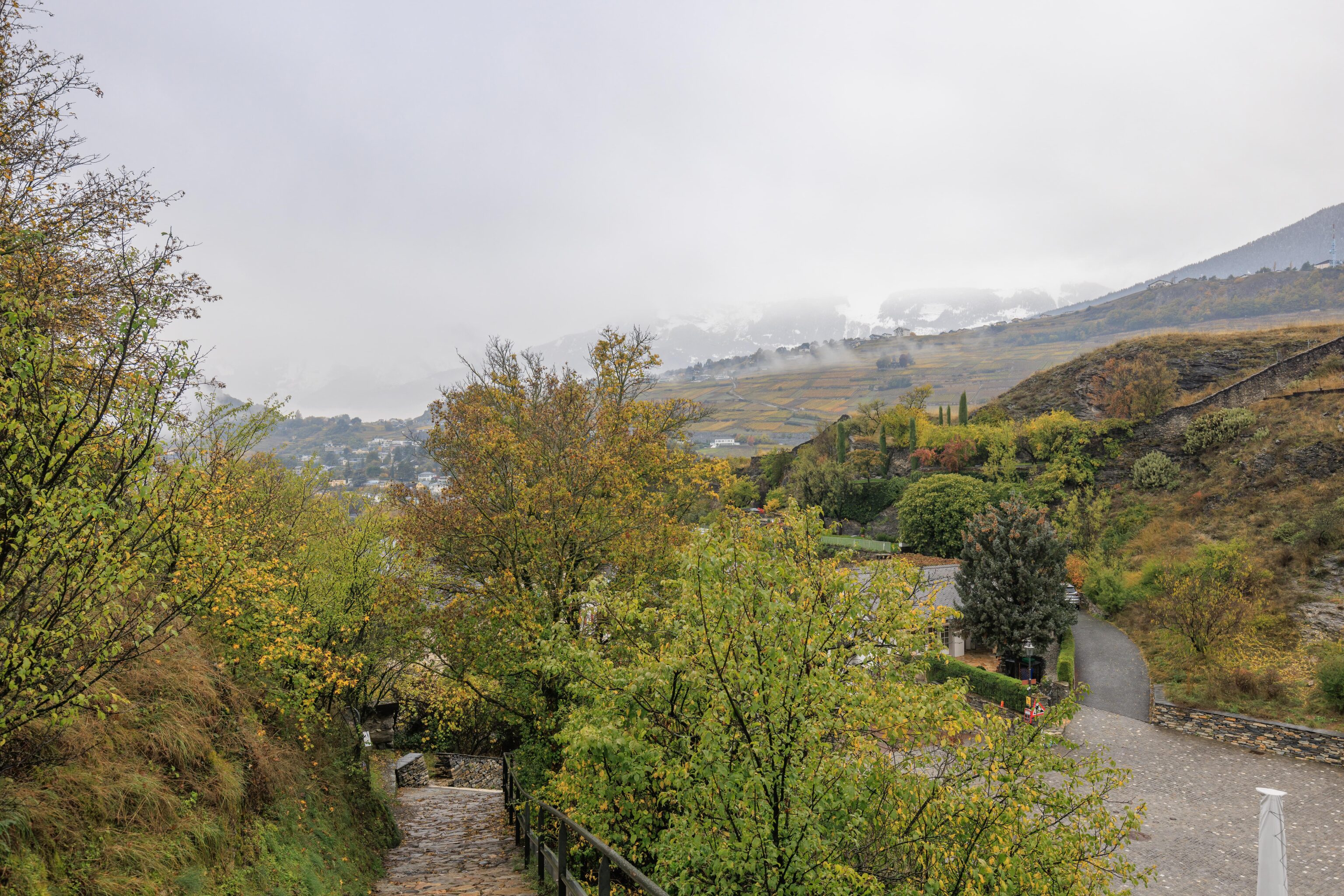
This was the view looking back near the start of the path up, just beyond the sign.

We passed by a small building, identified as the Chapelle de Tous-les-Saints on Google Maps.

We continued walking along the path as it continued to go uphill.

There was a junction here. The castle was above on the right. The sign at the base of the castle contains the following English text:
WELCOME TO VALÈRE The fortified church and its community, comprising the houses of the canons of the cathedral chapter of Sion who resided here until the end of the C18th, are situated behind the perimeter wall. Today the accommodation houses the Valais History Museum. Cultivated terraces, a mediaeval garden, a mill, a barn and a cistern continue to bear witness to daily life in the past. The site still belongs to the chapter which has entrusted its management and access to the public to the Valaisan government. In order to guarantee the conservation of this heritage for future generations a restoration programme has been under way since 1987 under the auspices of the Buildings, Monuments and Archaeological Service and the Office of the Valais Cantonal Museums. THE CHURCH The church of Notre Dame at the summit of the hill, built during the C12th and C13th and promoted to the grade of basilica by Pope Jean-Paul ll, is the final defensive position. Its architecture follows the transition from the Romanesque style to the Gothic. Unique works of art and items of furniture are preserved in its interior: Romanesque canopies, a rare C13th rood screen, a beautiful collection of C15th paintings, Baroque stalls, as well as the oldest organ in the world that can still be played (1432-1437). The restoration of the basilica is accompanied by contemporary interventions: following the reopening of the rose (2005) and the consecration of a new altar (2014), new areas will soon be renovated and opened to the public. VALAIS HISTORY MUSEUM The History Museum offers a complete panorama of the life of man in Valais, from his origins here to the present day. In the exhibition rooms, situated in the ancient residences of the canons which have been completely reorganised, artefacts bear witness to the wealth and continuity of human activities at the heart of the Alps. The tour allows visitors to discover local treasures of cantonal, national and even international importance. The museum offers interactive circuits for families. www.musees-valais.ch

We went to the left, ending up at an opening with a view of the Château de Tourbillon above us on the other hill. The outer wall, defending the entrance path, appears prominently on the left.

We had a clear view to the south, showing the Rhône and the southern half of Sion.

Looking back to the west, we could see the Basilique de Valère rising up above us.
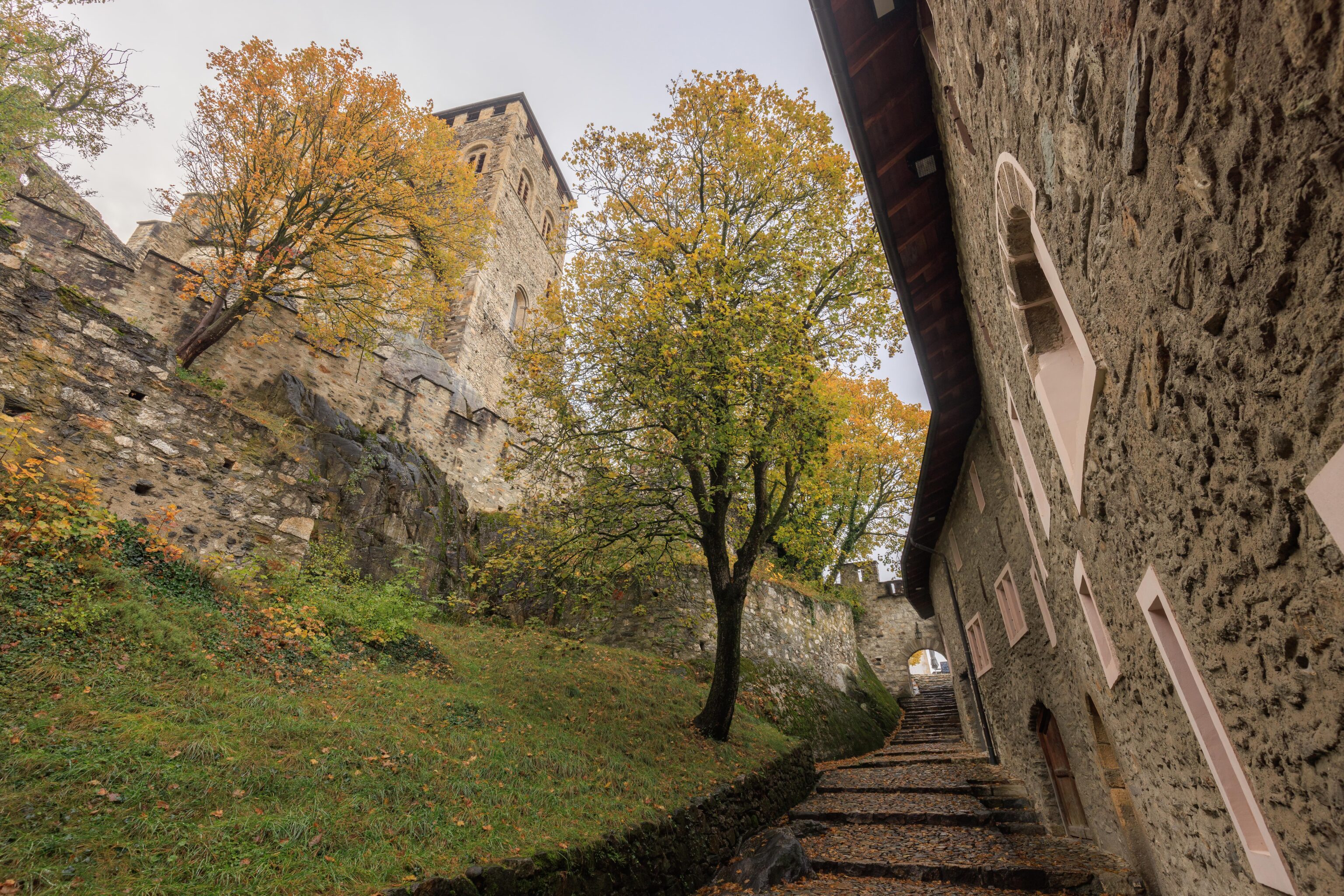
We followed the path up as it went into the castle grounds. It turns out that the Musée d’histoire du Valais (Valais History Museum) is free on the first Sunday of each month. That would be today! So, we decided to go in and take a look. The entrance was up this path in a building on the right. We left our backpacks on a shelf as they wouldn’t fit in the lockers and continued on to the first of two buildings that make up the museum. This is Switzerland so we weren’t too concerned about leaving our bags unattended and unlocked.
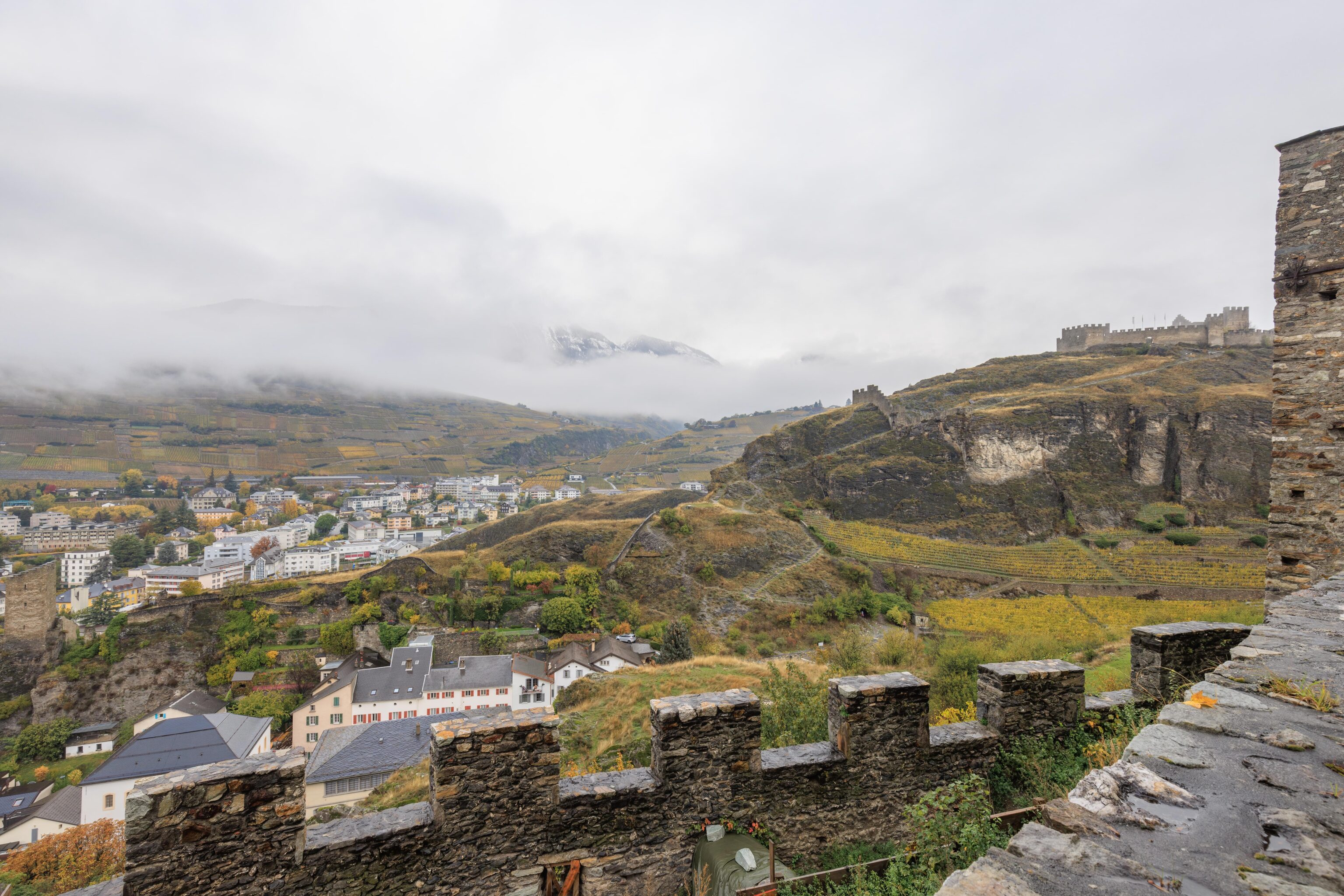
Getting to the first building required going back outside and walking to the western part of the castle. From here, looking south, we could see the hill that the Château de Tourbillon sits atop. We can see the path that we took to get up to the castle as well as other stone structures that were were not able to see from the route.

There is a little garden at the western end of the castle grounds. This tree had some fruit!

The view to the south. Some of the castle structures were undergoing renovation in areas that weren’t accessible from here.
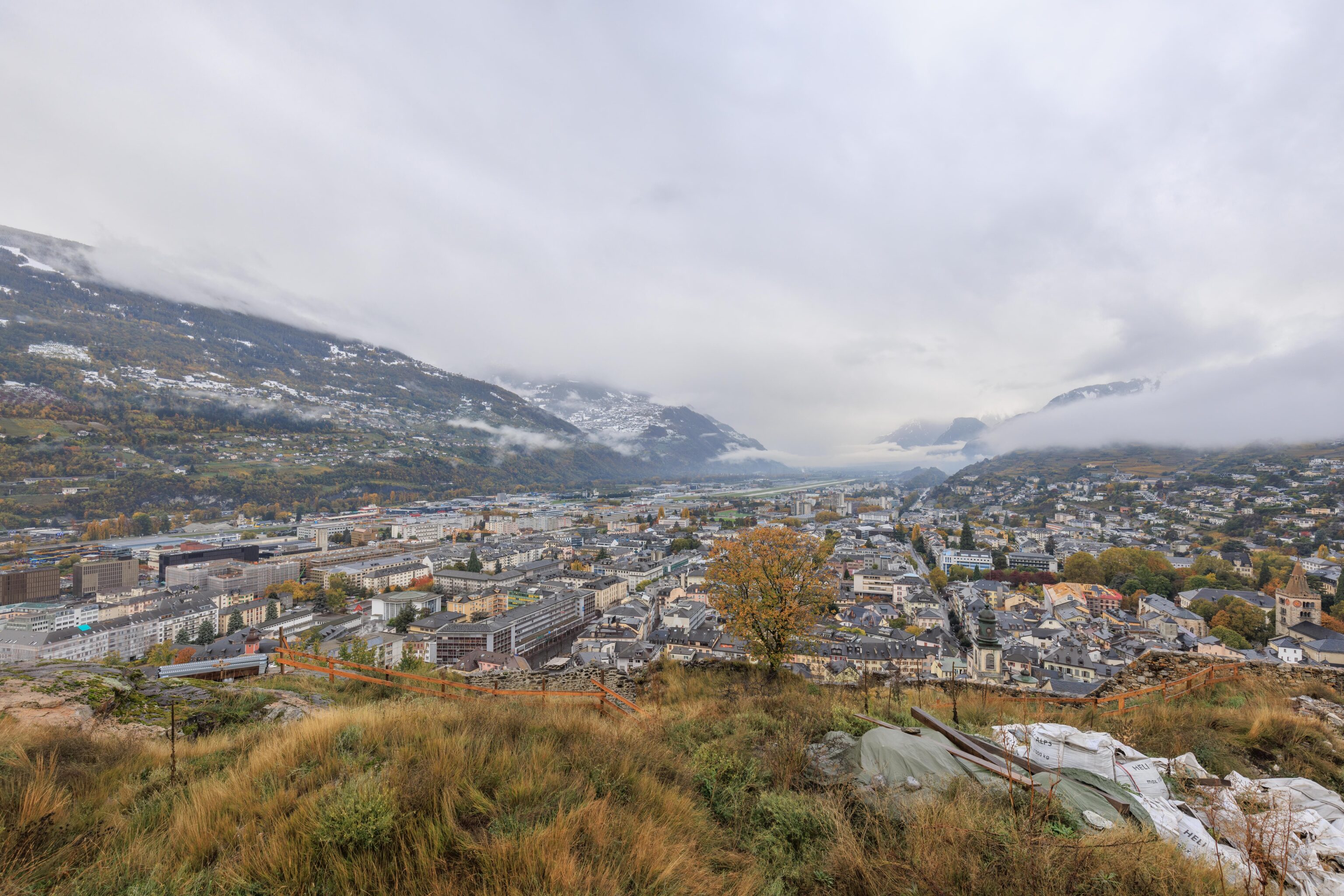
The view to the southwest showed more evidence of renovation activity in the foreground.

To the north, we could see more stone walls below us as well as a bit of the Château de Tourbillon on the opposite hill.


The museum held various artifacts, ranging from ski boots to arrowheads.


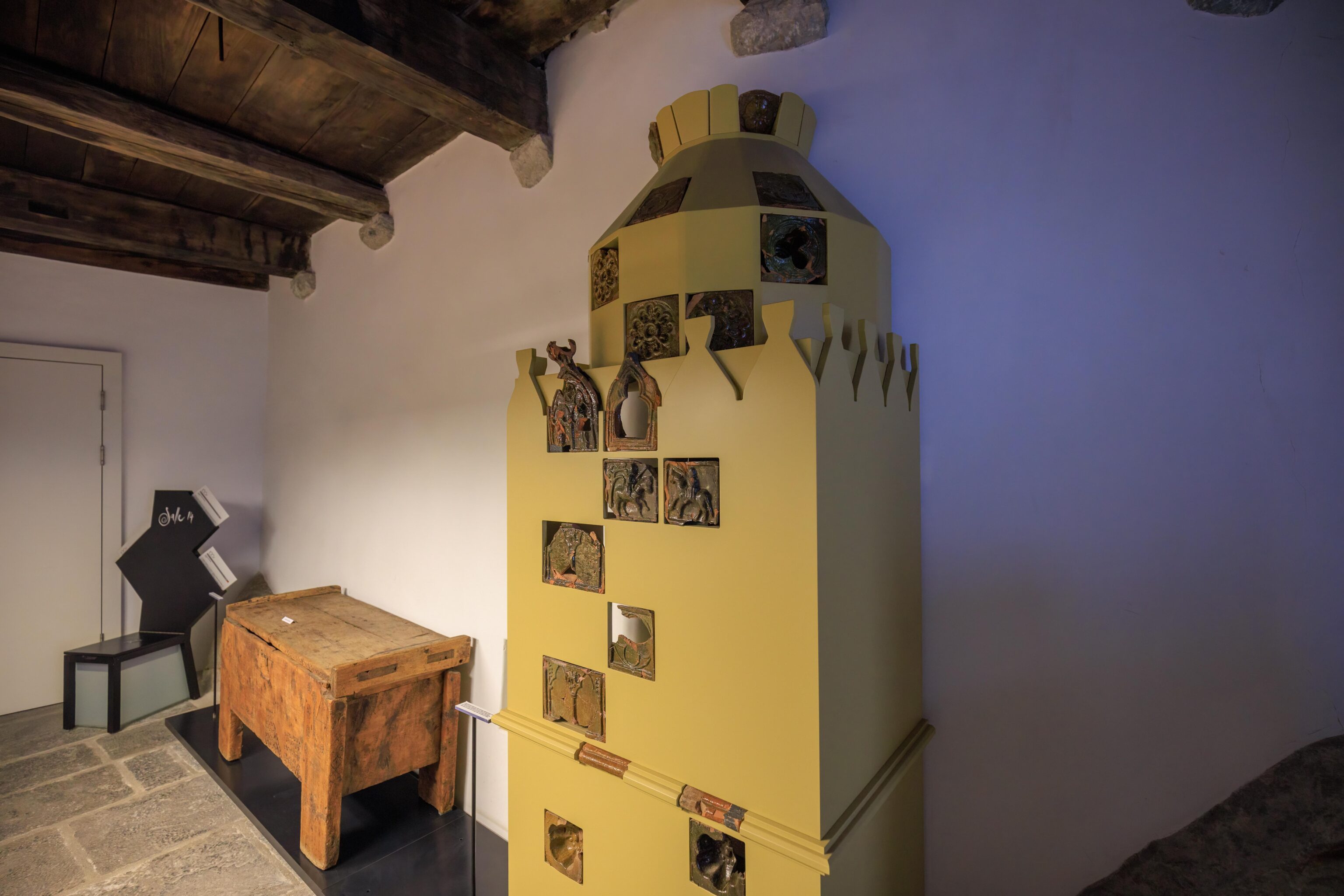
Some rooms were simple rooms with display cases while others were decorated and held larger artifacts. The museum generally speaking covers the human history of the local area. It is probably a bit more interesting if fluent in French so that the signs can be read quickly.


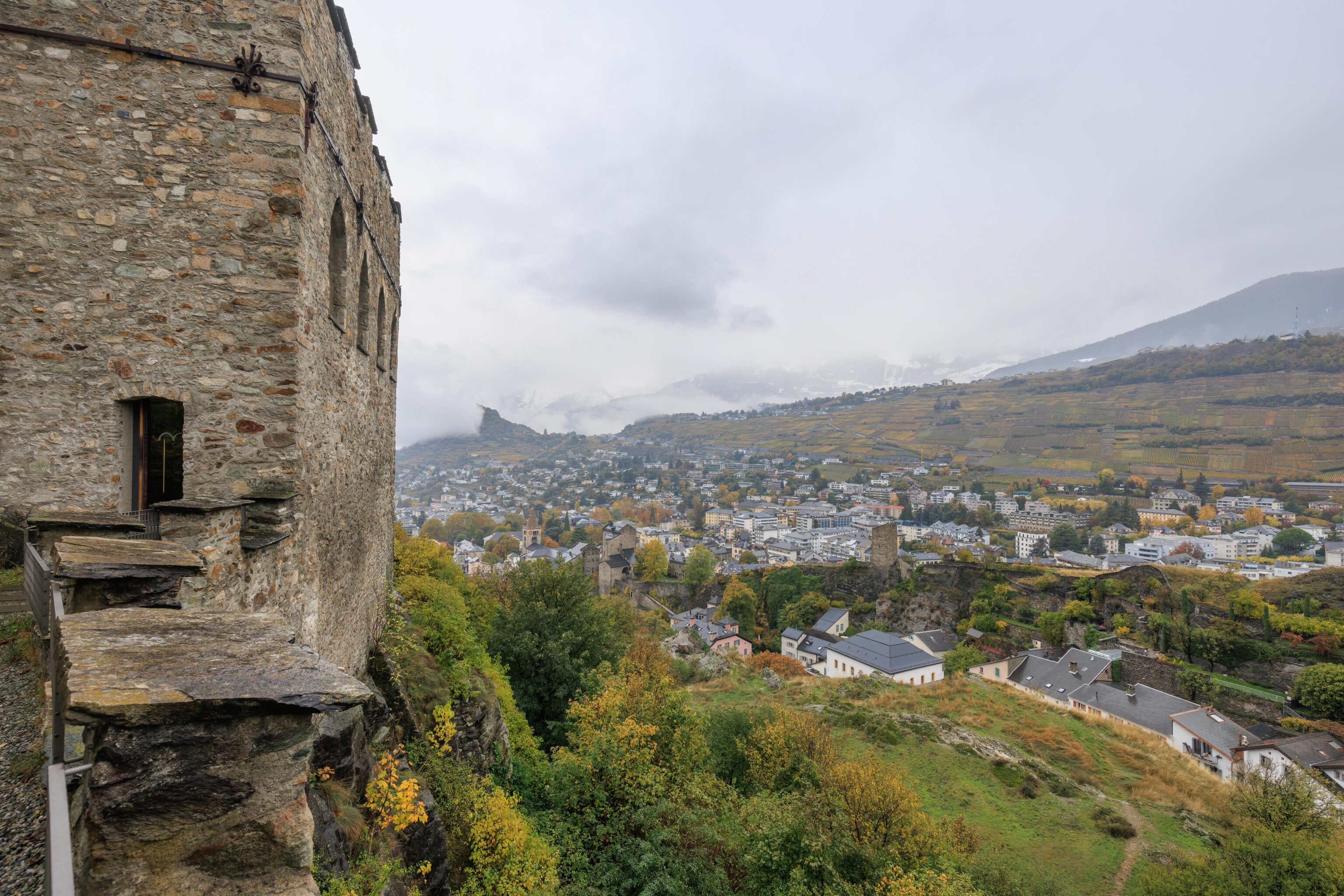
After finishing walking through the first building, we backtracked to go to the second building, below and to the east of the museum entrance.
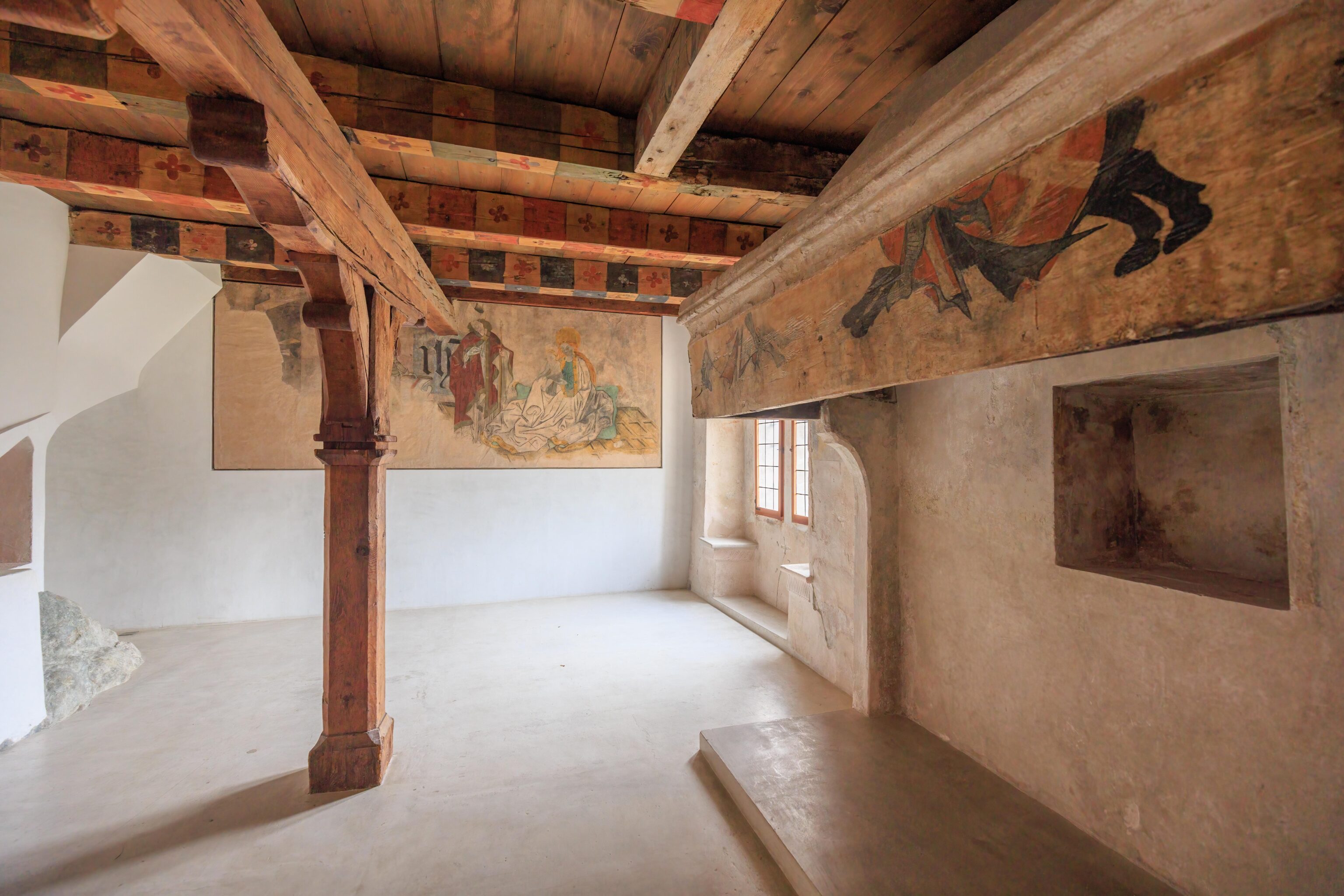
It was different, yet similar.

After walking through the second building, we exited the museum and continued on the path through the castle. We came from the left near the greenish fire hydrant in the background. There was an open area behind us which had views of the area.

We passed by a tower below us to the south.
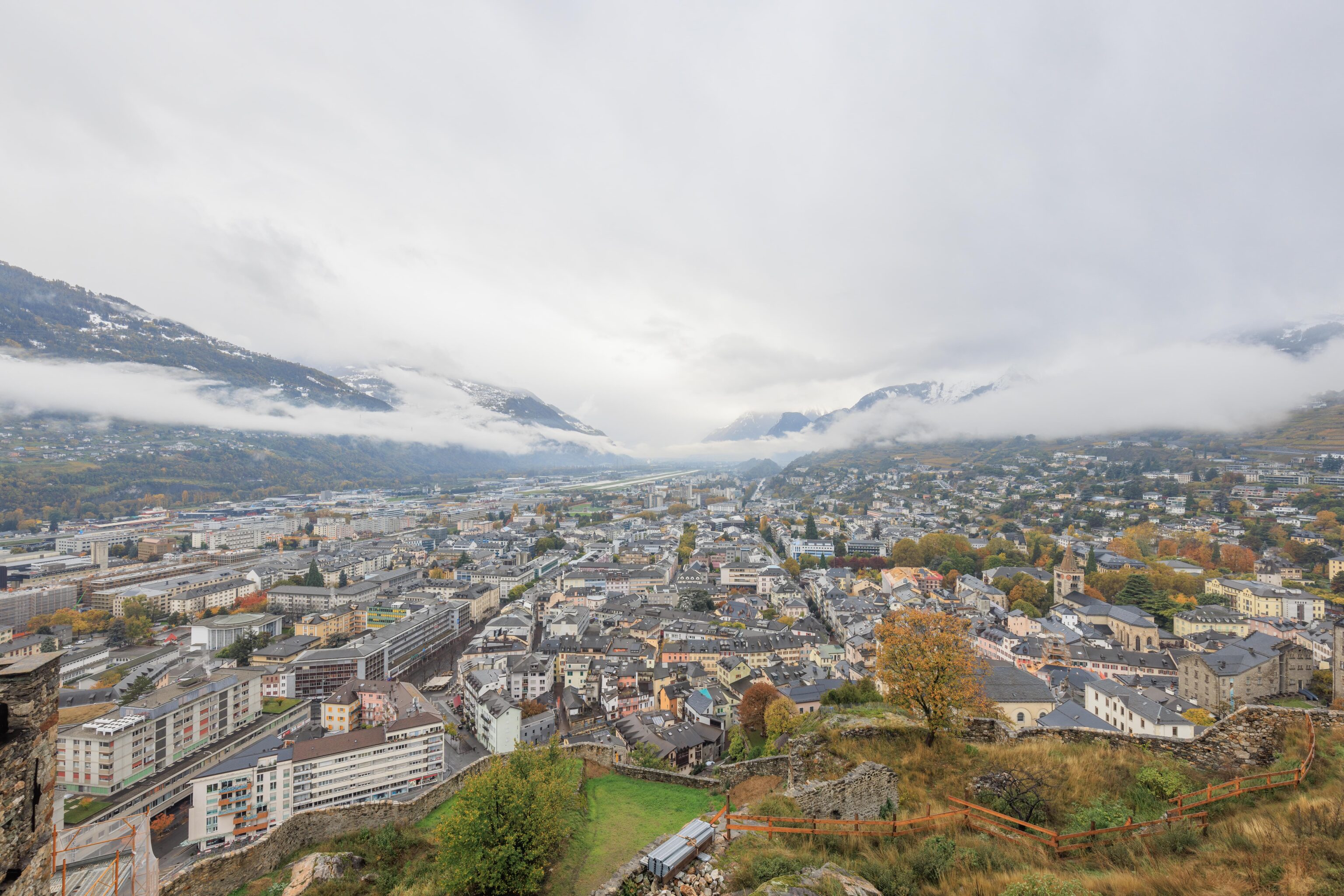
The view down the valley to the southwest was similar to the view we had previously.

Time to head back and take the stairs up!

Finally, we were in front of the Basilique de Valère. It has a nice view of the Château de Tourbillon.

Looking up a bit, we could see what is probably the church’s bell tower.

Time to go through the front door! The small door cut into the larger door opens.



The church’s interior was simple and mostly plain, though decorated in places. The sign we saw earlier described what is here:
Unique works of art and items of furniture are preserved in its interior: Romanesque canopies, a rare C13th rood screen, a beautiful collection of C15th paintings, Baroque stalls, as well as the oldest organ in the world that can still be played (1432-1437).

We were not able to go through this door into the choir as it is only accessible on guided tours.

There is a mill inside the church building!

We exited and started our journey back down to Sion. We passed by this sign on the wall, memorializing when Pope John Paul II made this church a minor basilica.



Sometimes, while backtracking we end up on side trails that we’ve already visited. We did that today. Oops!
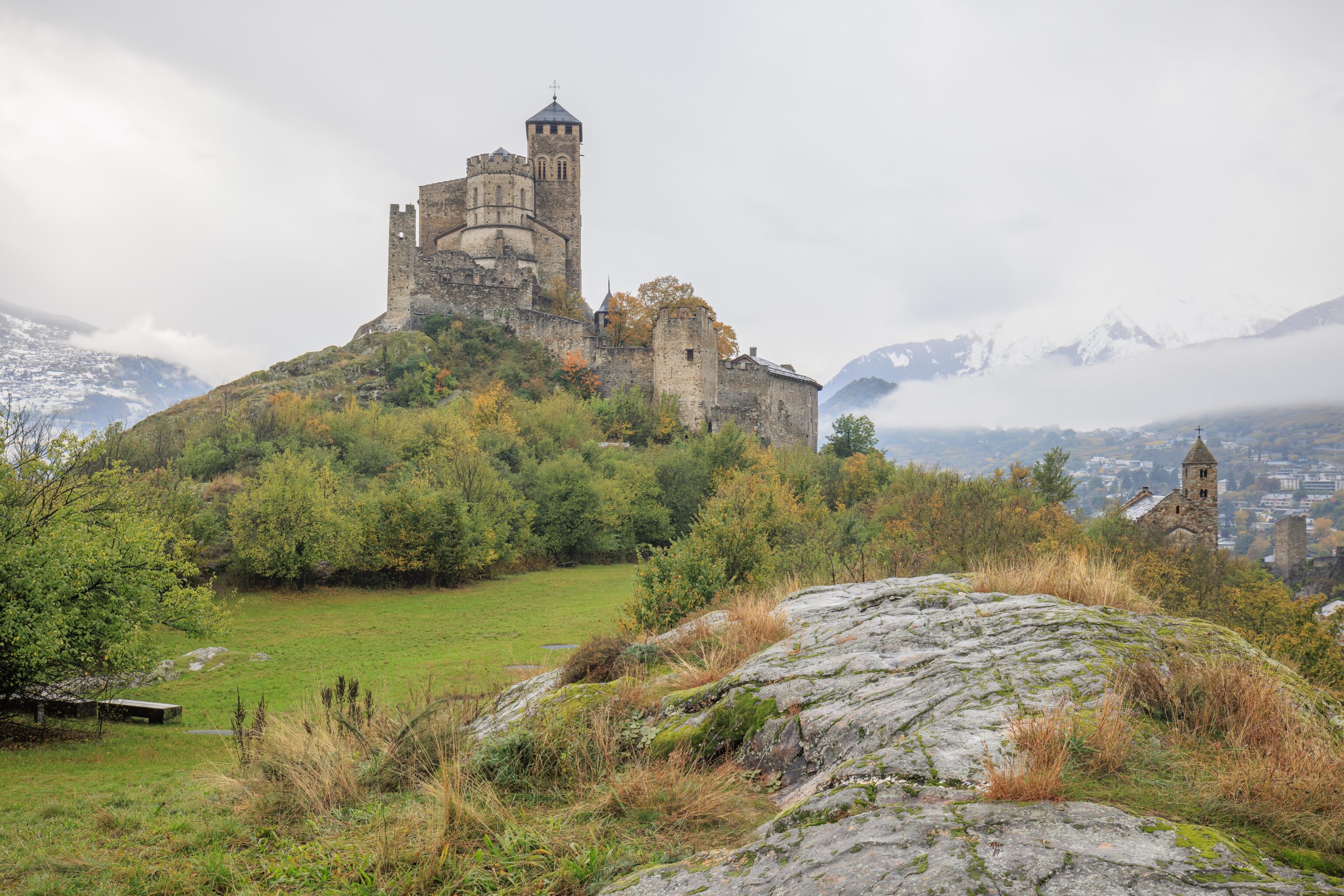

This time though, we did walk through the small parking lot at the base of the castle buildings. There was a path that led through a small park area with a great view of the Basilique de Valère above us!

Of course, it has a great view of the Château de Tourbillon as well.

We returned to the path and continued to walk down.

We made it back to the plaza between the two hills and continued walking down back into Sion.
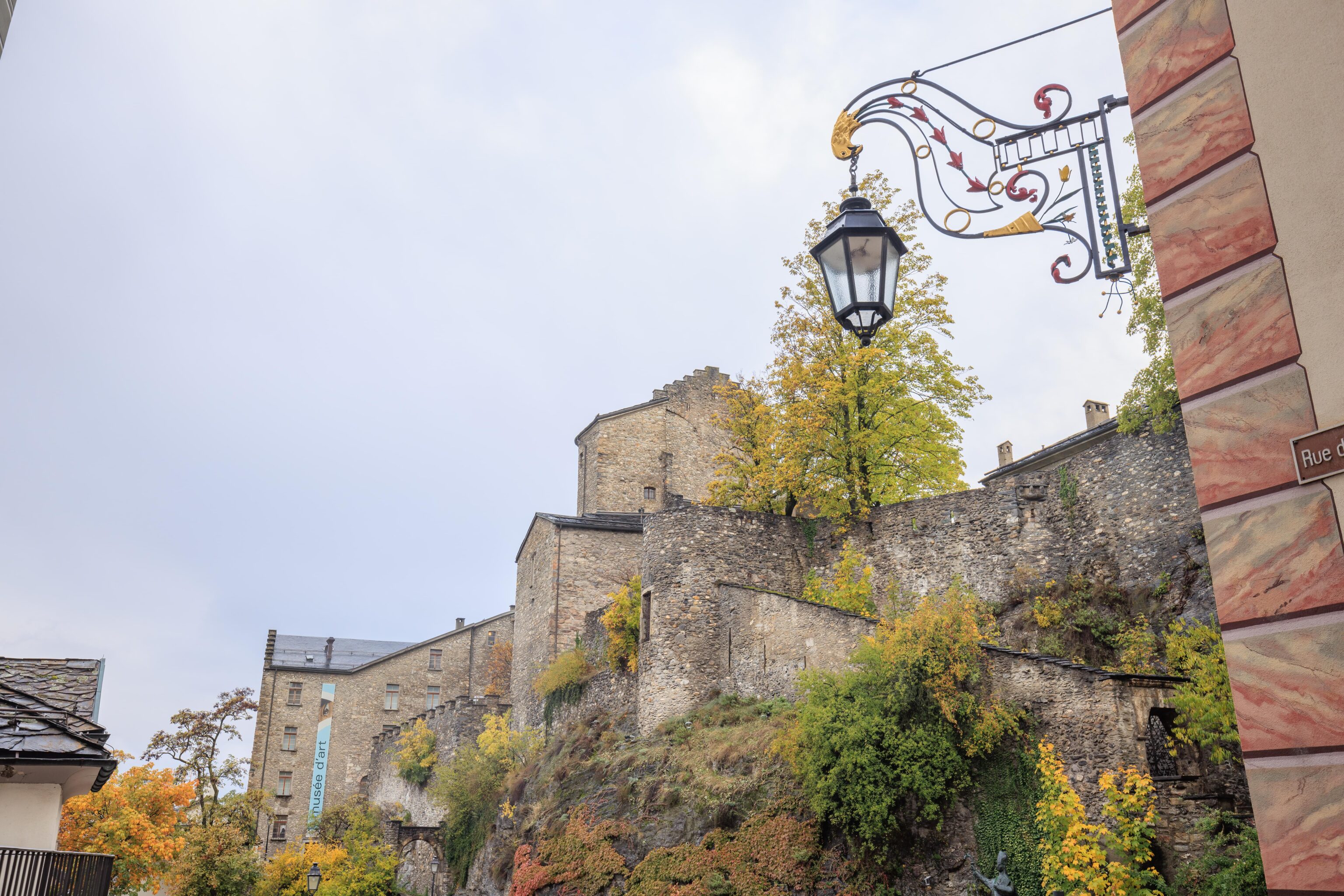
We passed by the Musée d’art du Valais once again, which we already photographed from a slightly different vantage point.
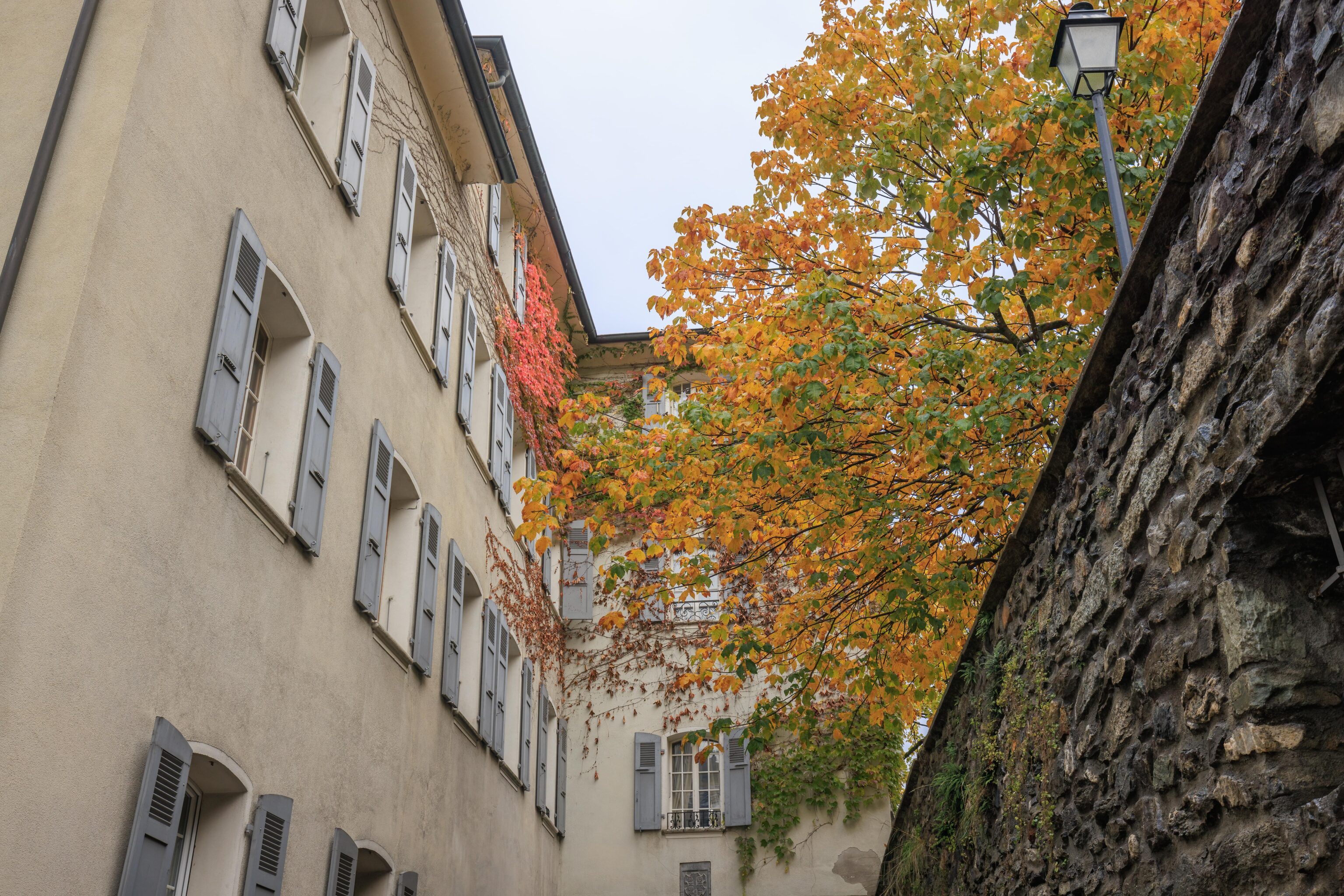
A bit of colorful fall colors in an otherwise dull scene. By now, it was around 2:30pm. Well after normal lunch hours in Switzerland. We knew it was unlikely any normal restaurant would be serving food at this time on a Sunday when there was no one around. Luckily, there was a boulangerie nearby, the Boulangerie Le Délice du Grand-Pont!

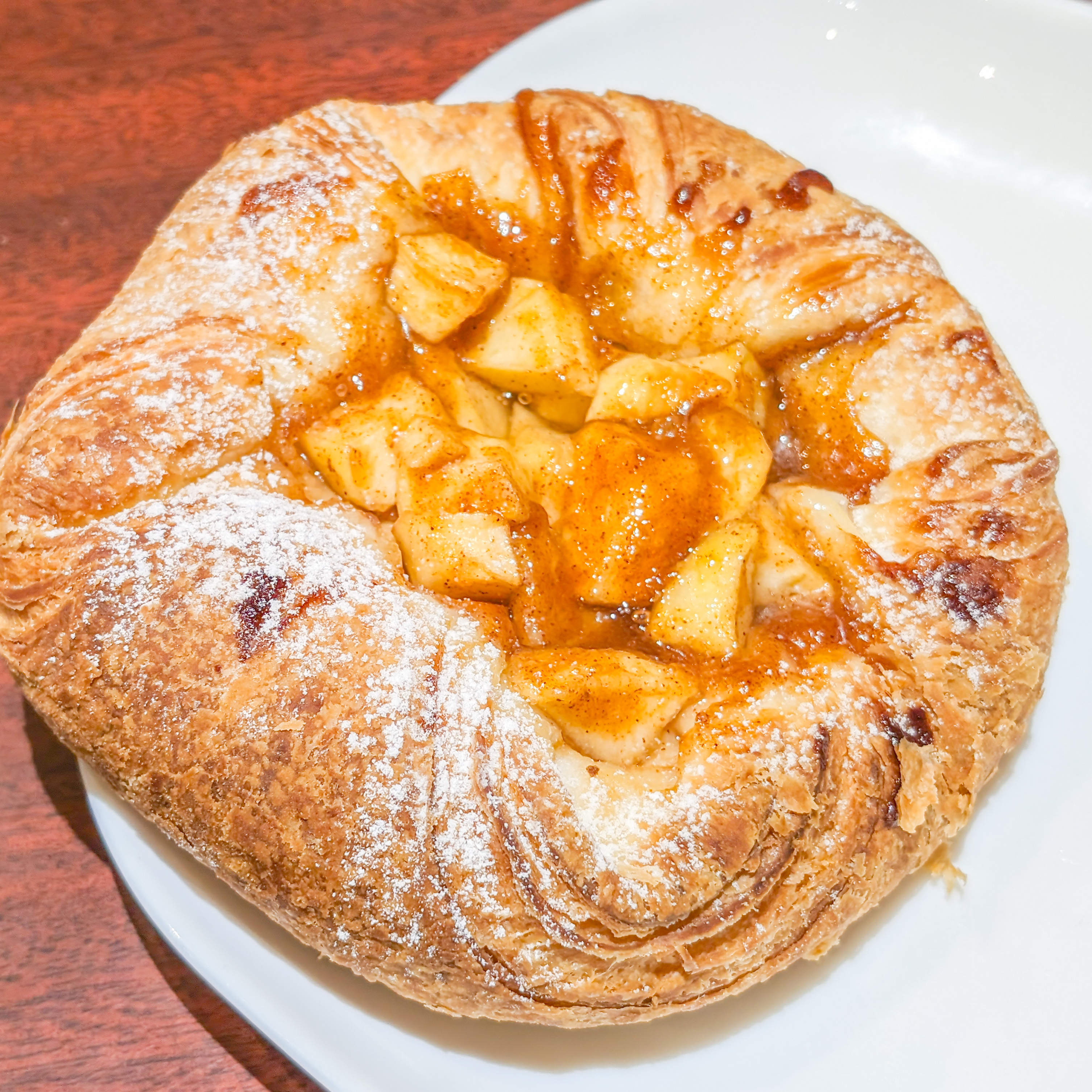
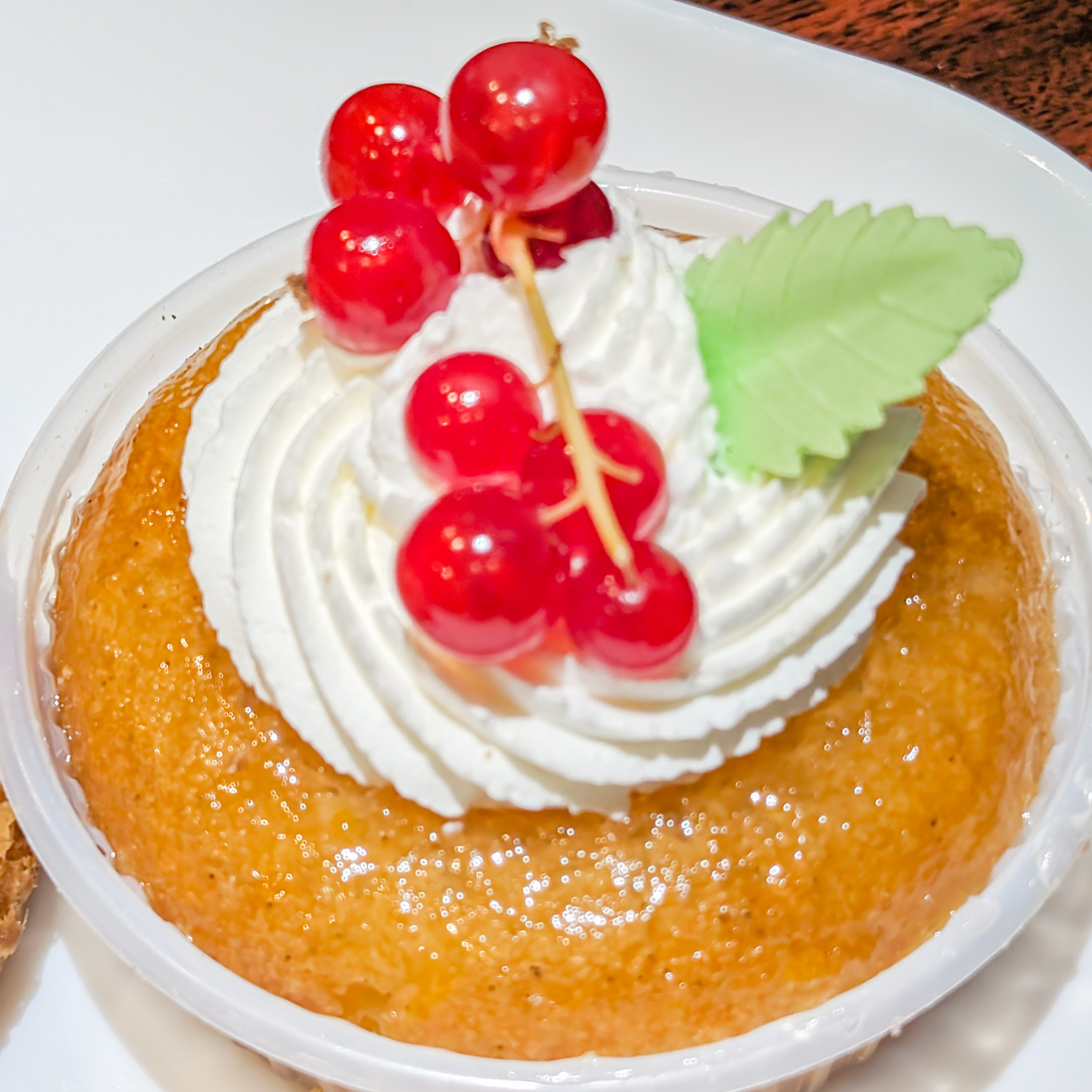
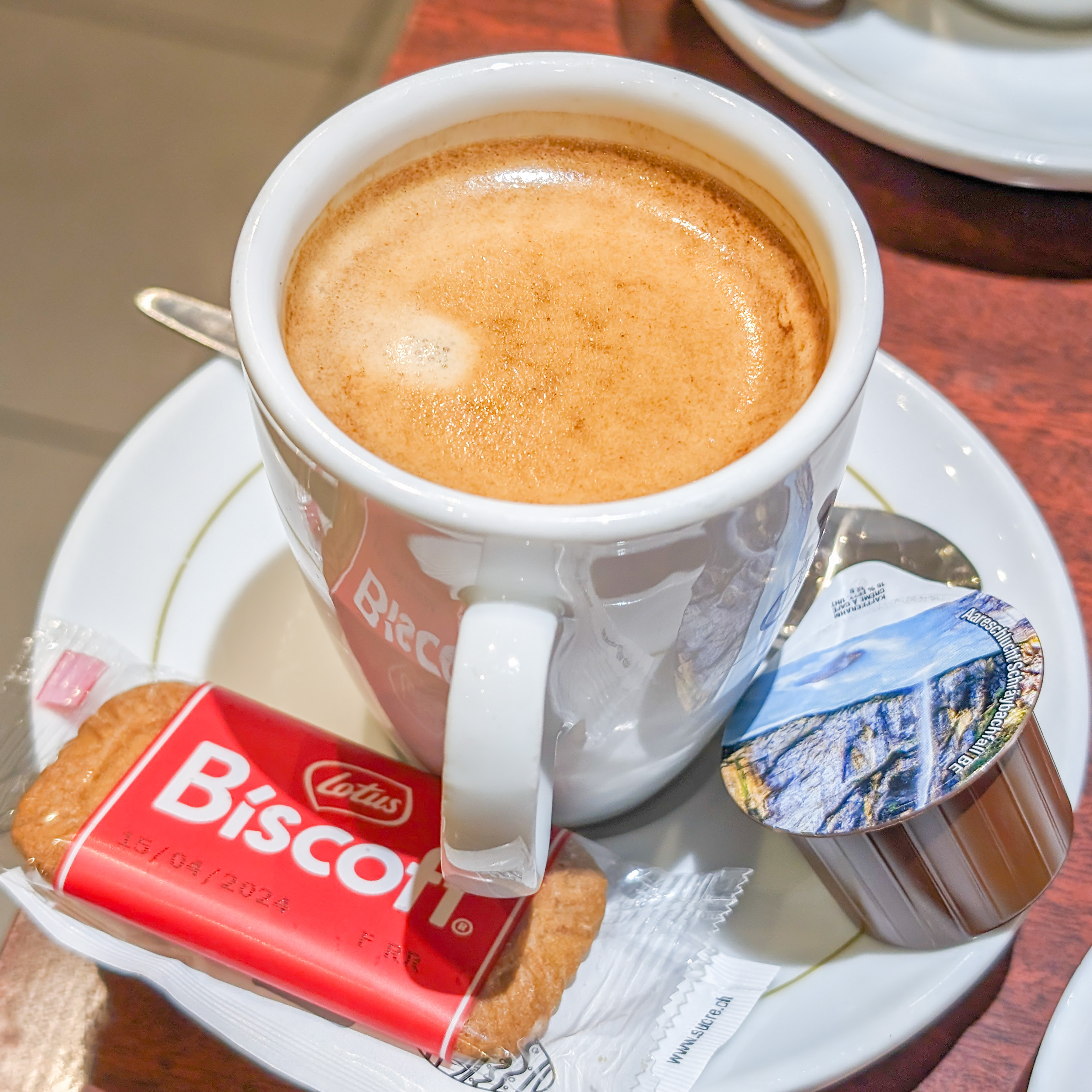
We got three food items and a coffee. Everything was good! The pastry at bottom left was particularly interesting as it was soaked in an alcohol based sauce.
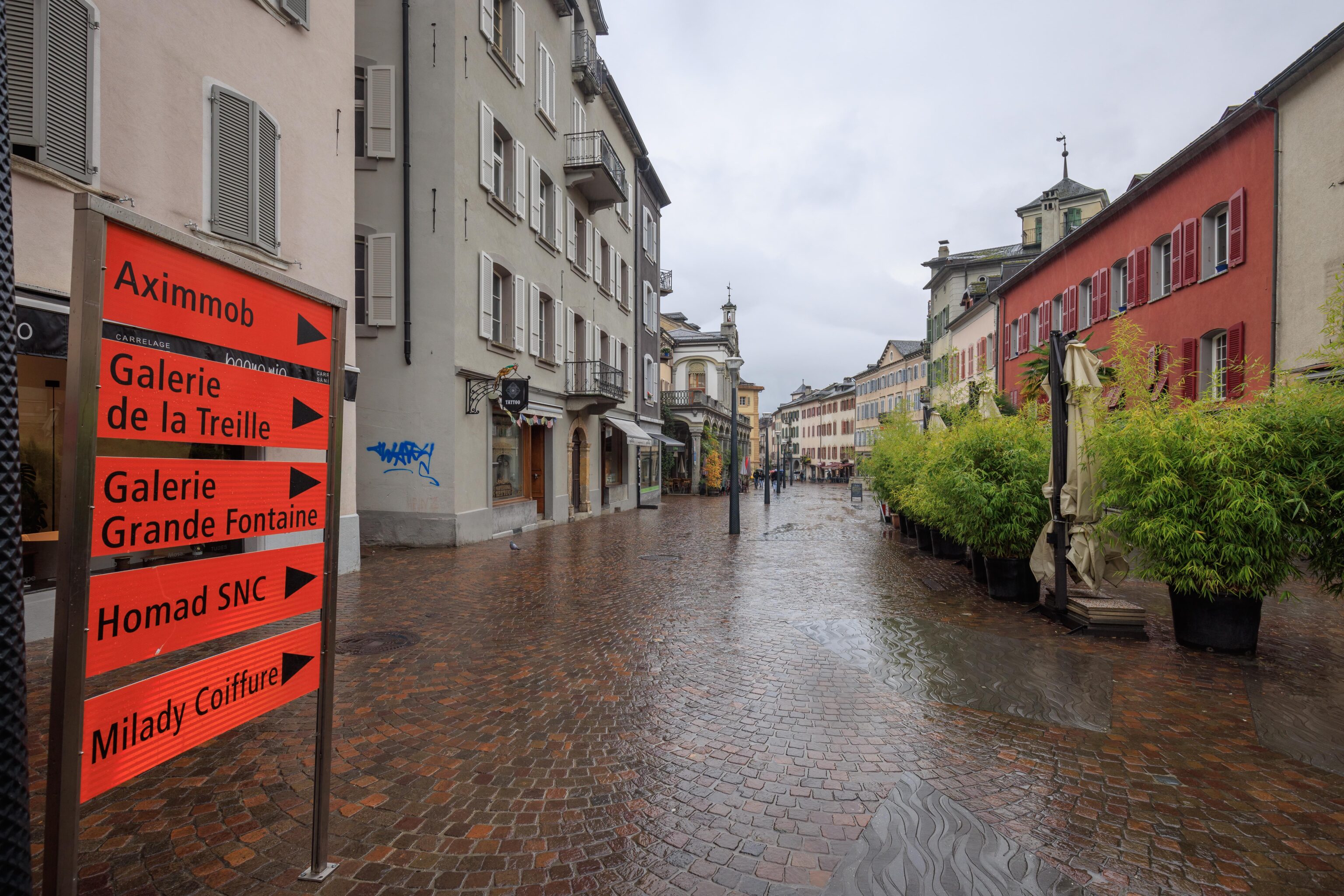
After eating, we headed back out to return to the station. The street scenes were similar to before, though with a few more people around but it was still mostly deserted.

We passed by this nice view of the Basilique de Valère above us!

This small pedestrian street looks like it would be quite nice if it wasn’t raining and mostly deserted!
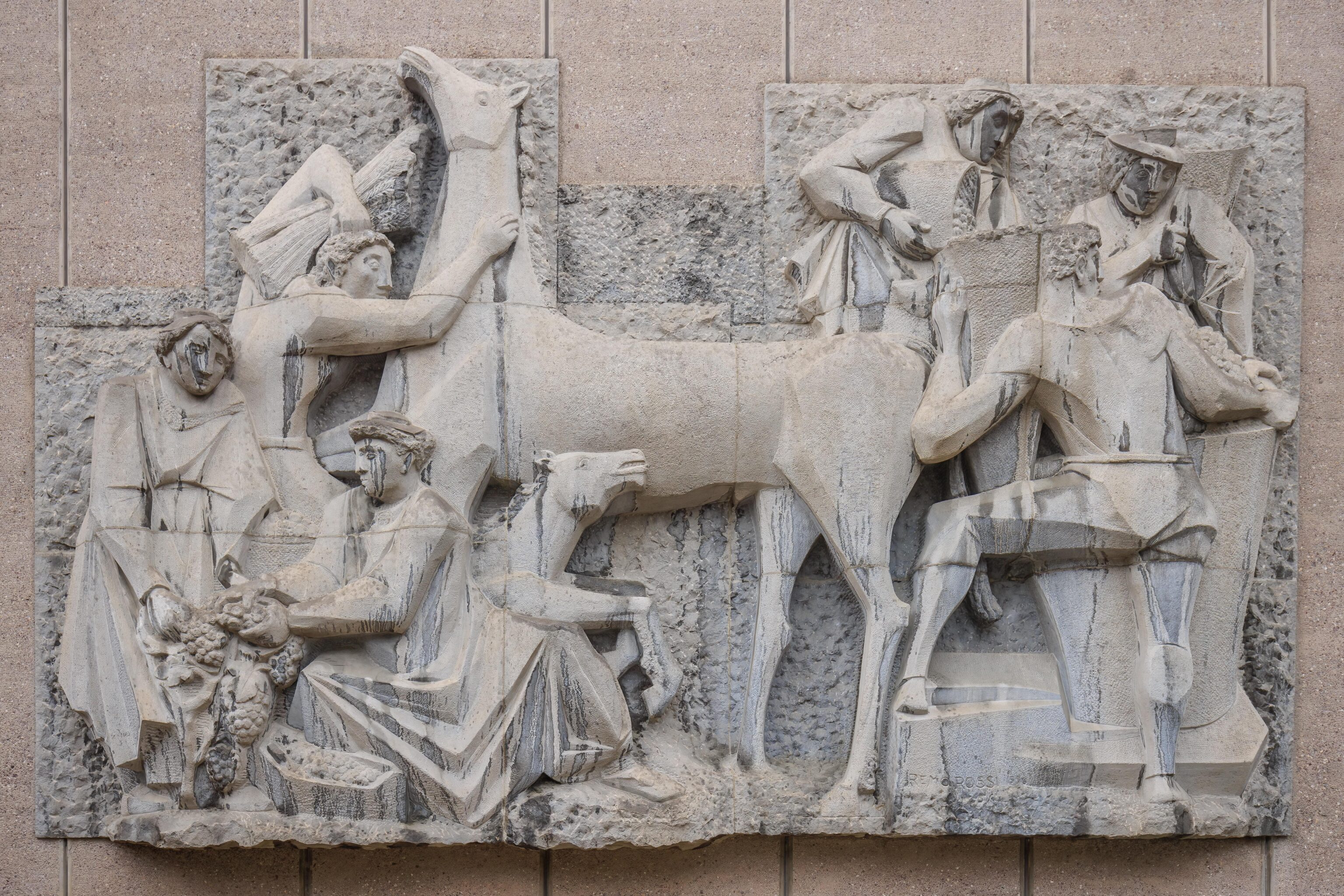
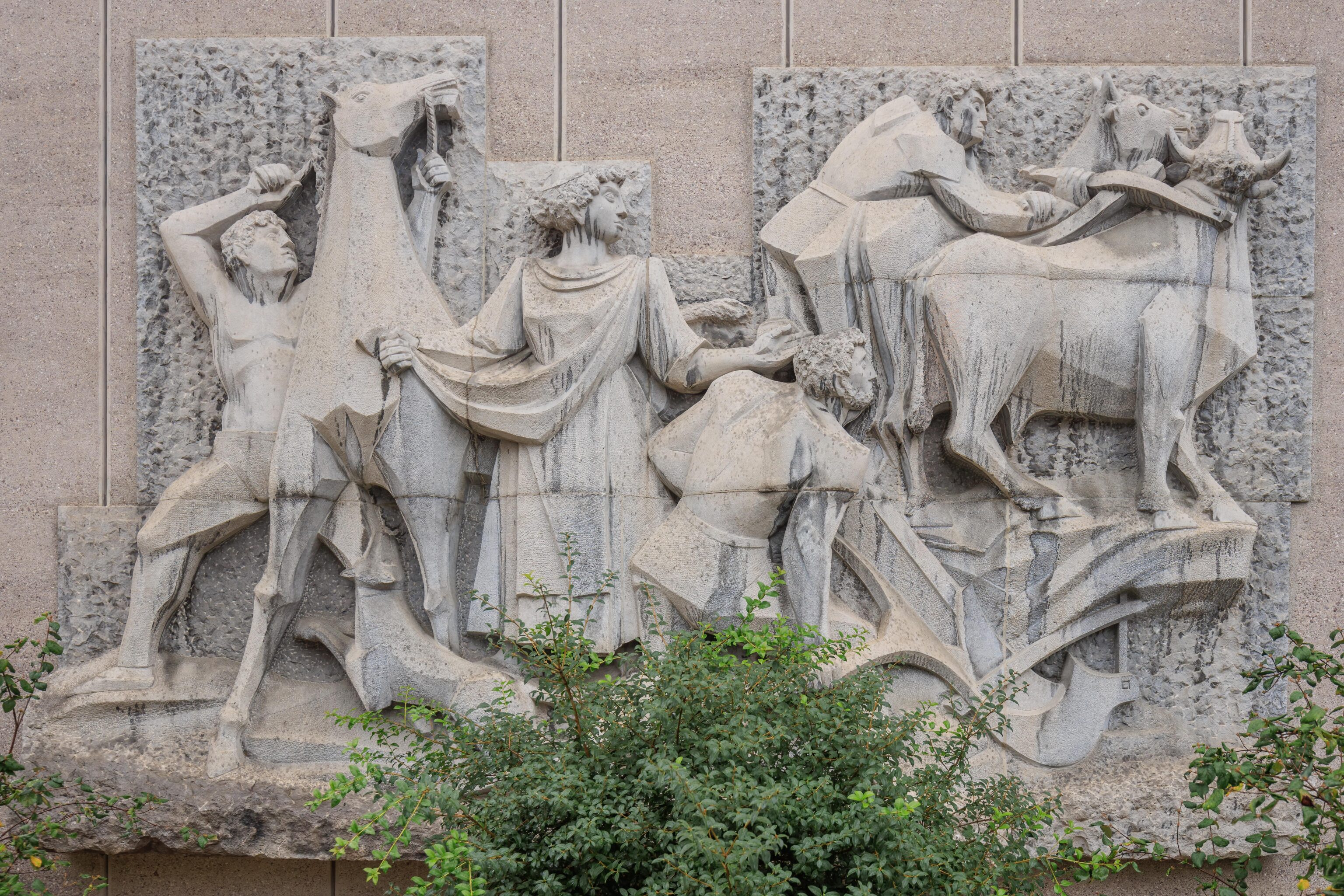
This building, housing the Banque Cantonale du Valais had two decorative stone carvings on the front. They seem to depict rural and agricultural scenes.
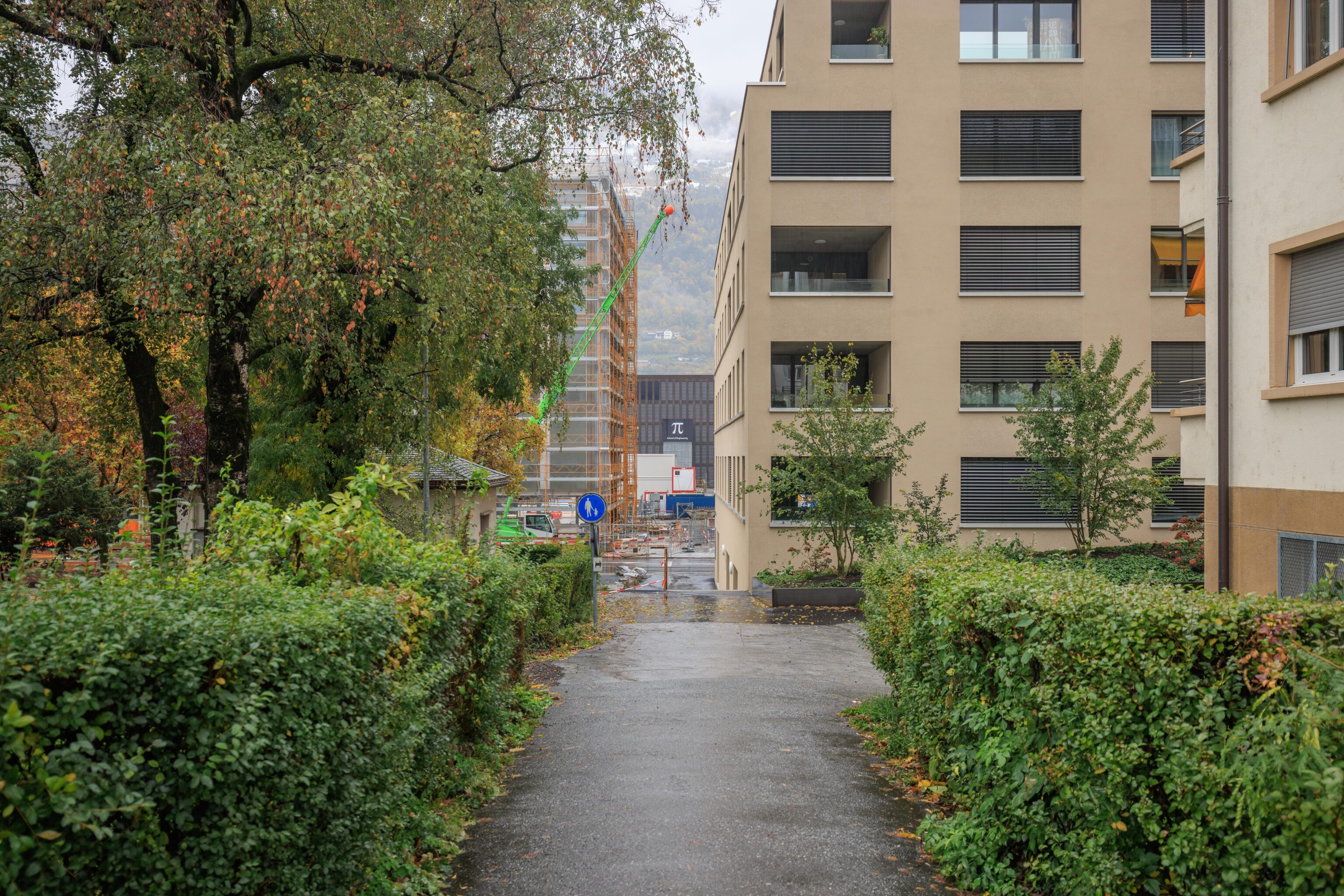
We noticed this building to the south had the greek letter π (pi, looks a bit weird in this font). Looking closer at the building, it says School of Engineering! It appears to be the Haute Ecole d’Ingénierie de la HES-SO Valais-Wallis (High School of Engineering of HES-SO Valais-Wallis). This seems to be a university despite its name being extremely confusing from an American perspective! And, Wallis is simply Valais in German.

One last peek at the Basilique de Valère before reaching the train station and catching the next train back to Montreux. Unfortunately, we were not able to see the Château de Tourbillon from here.

After getting off the train on the platform closest to the street, we were surprised to see some blue sky above Lake Geneva! And, it wasn’t raining!
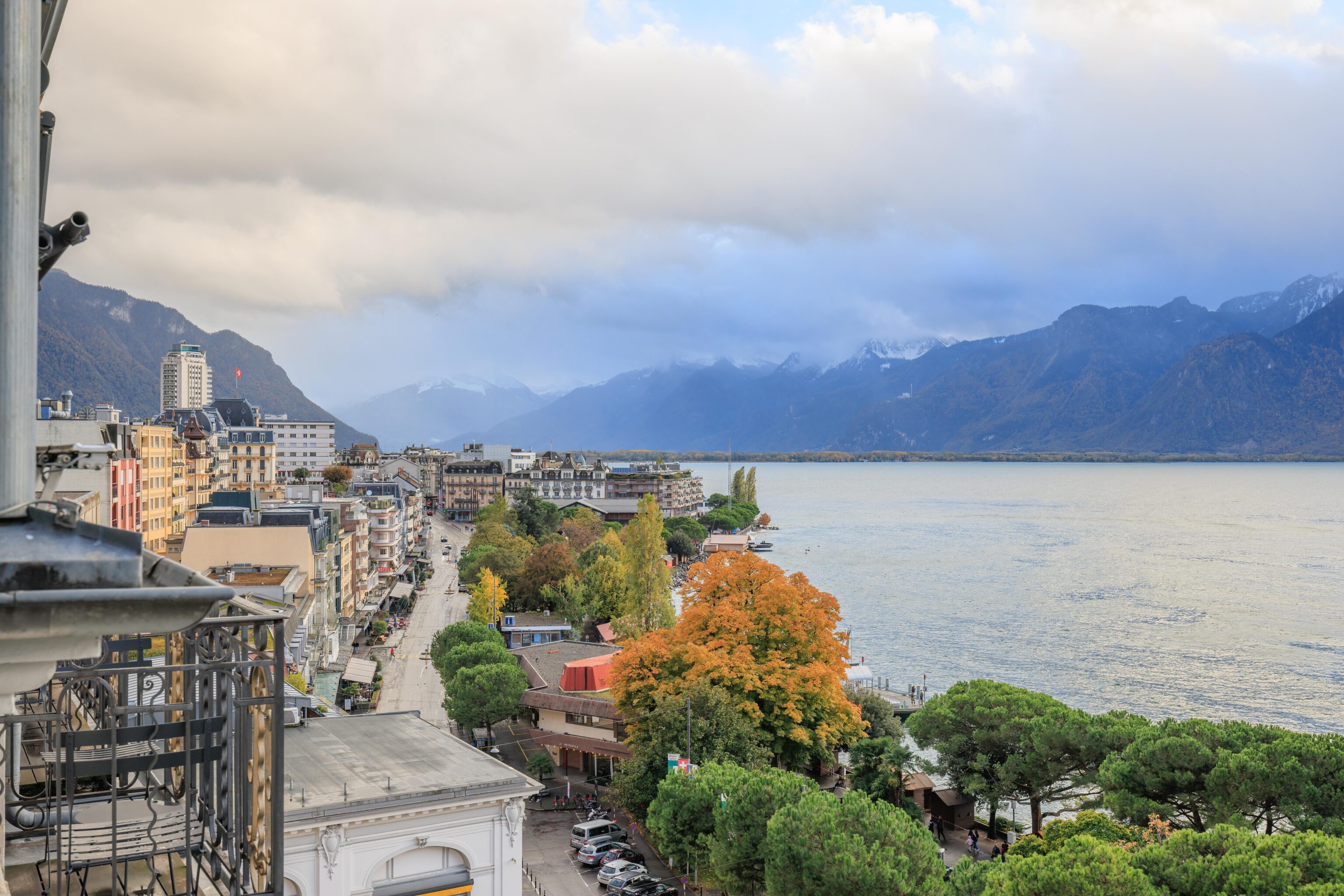



The beautiful view from our balcony at the Grand Hotel Suisse Majestic! I should have shot a panorama but for whatever reason didn’t think to do so. It looks like there is still snow atop the mountains. And the fall foliage on the lower slopes looks like it is quite nice!
We decided to head up to the Restaurant Le Museum to get dinner. We ate there twice last year. It was quite good and reliable, though requires walking up a hill or waiting for a bus. We walked as it isn’t far away and we had just missed the bus.
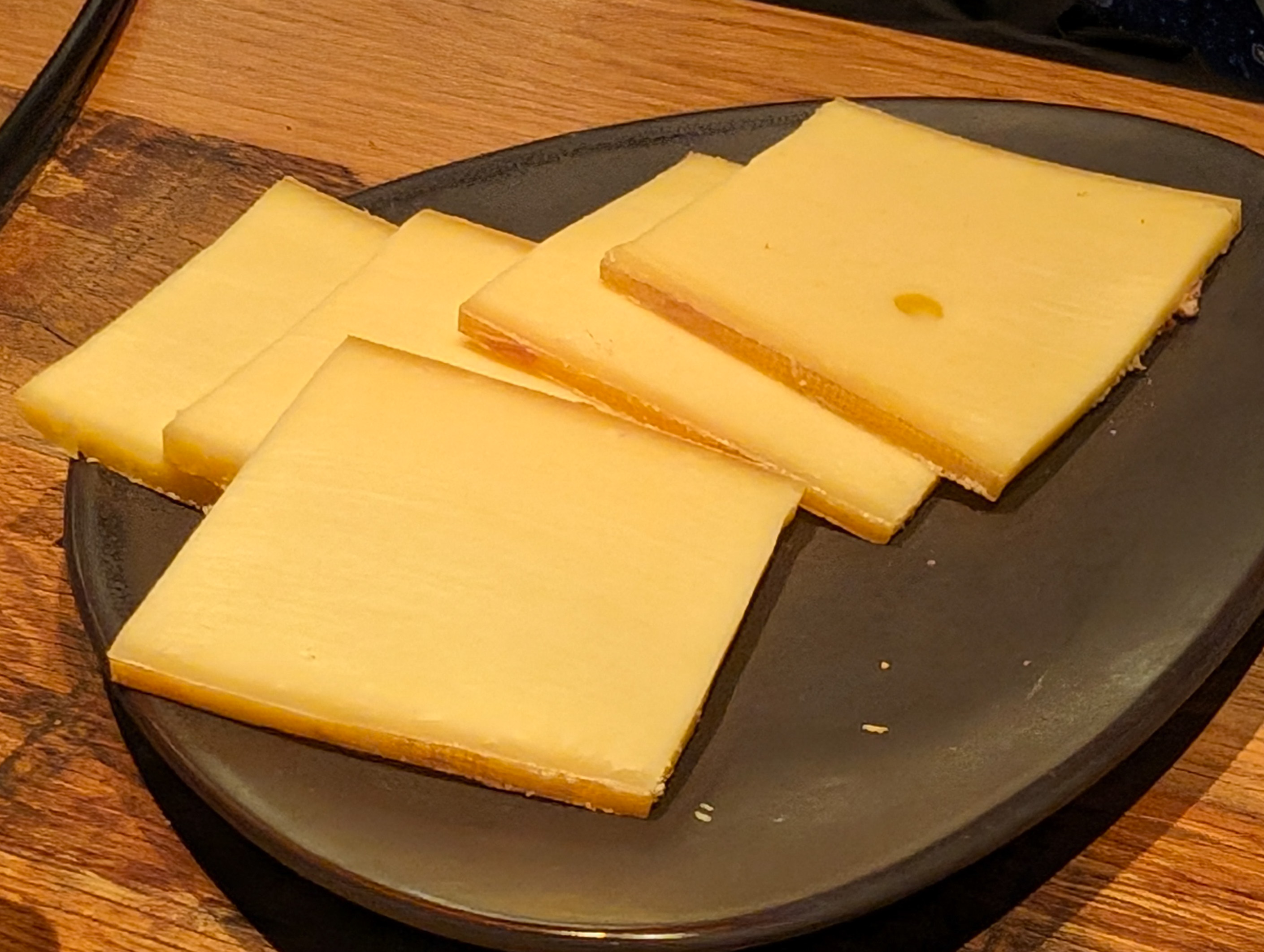
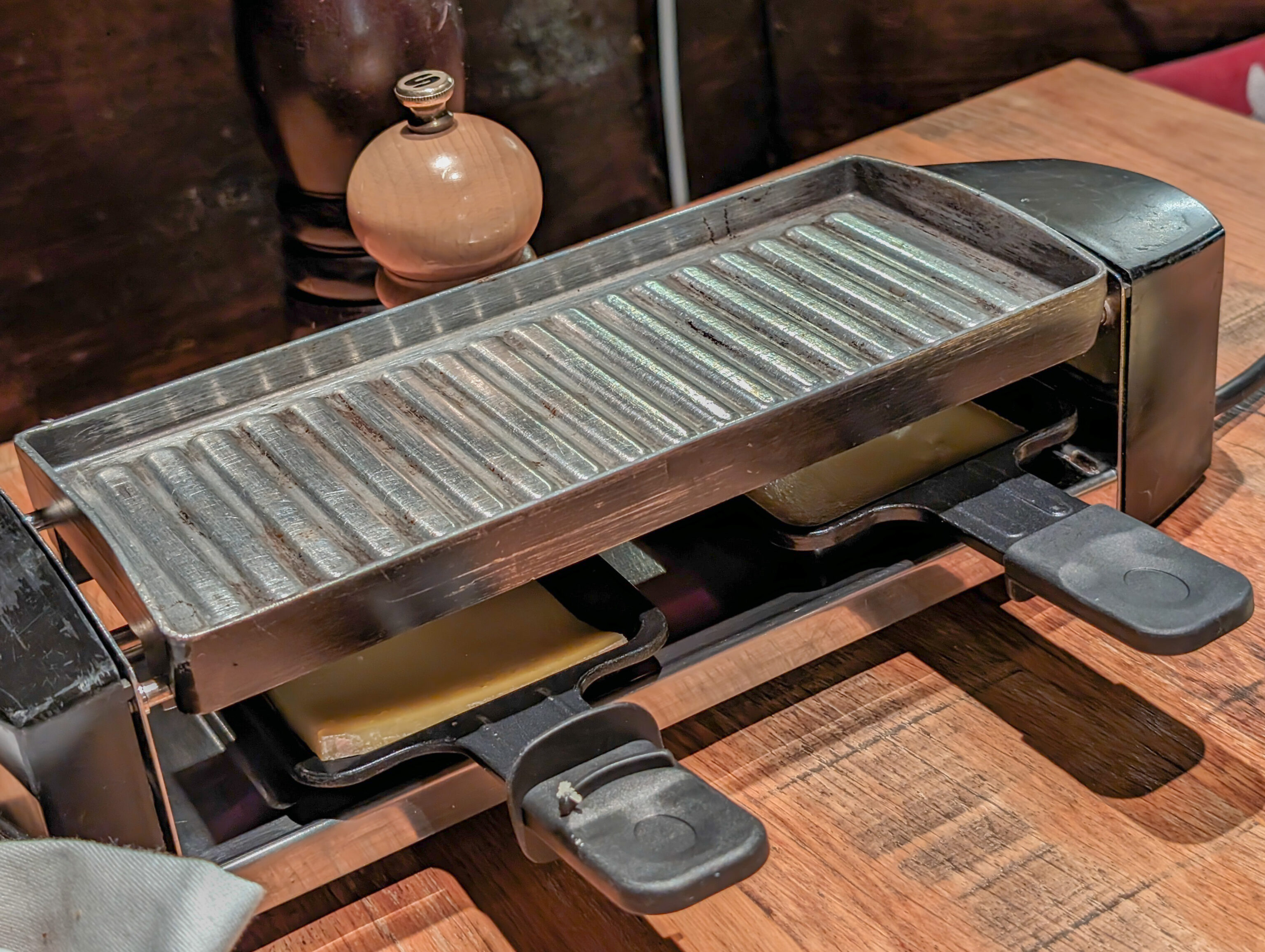

During both our previous visits, we had fondue. Today, we ordered their raclette and a rosti, basically hash browned potatoes, with Gruyère cheese and ham. We had raclette once in Zermatt but it was precooked. Here, the cheese was already sliced but we melted it on the grill. The fully traditional way of serving involves scraping the cheese slices off a larger block of cheese before melting it. The melted cheese is then poured on potatoes. There were a few toppings available: tomato, onion, pickles, and what seems like small pickled onions. We failed to photograph the potatoes and the toppings. It was good, much like fondue but the cheese makes it taste different. The flavor isn’t as strong. The rosti was very good as well though more cheese would have been nice.


